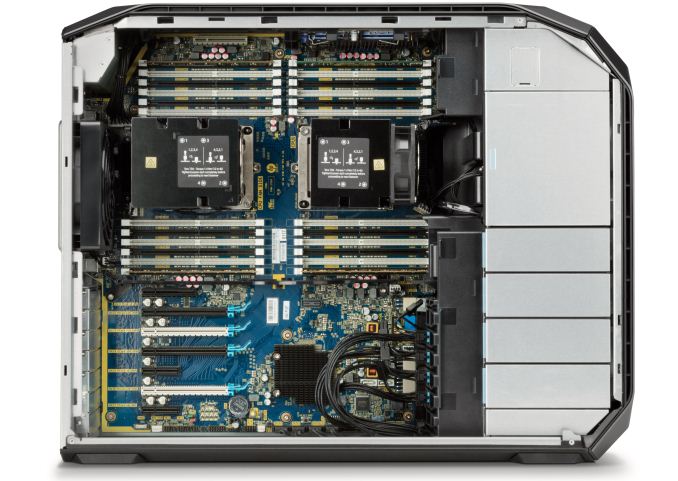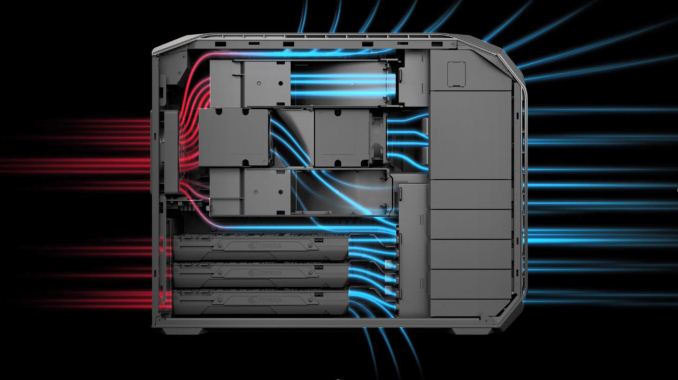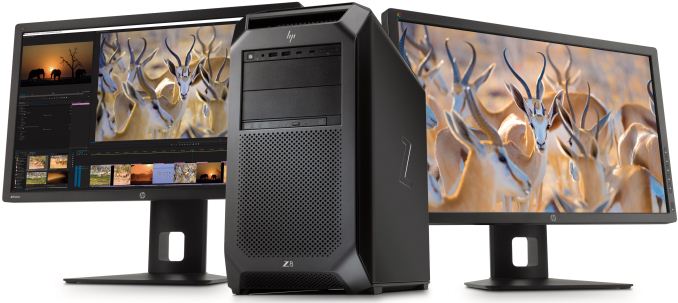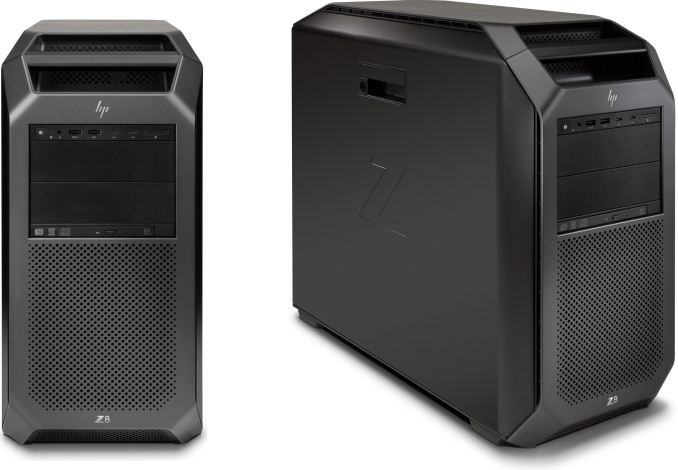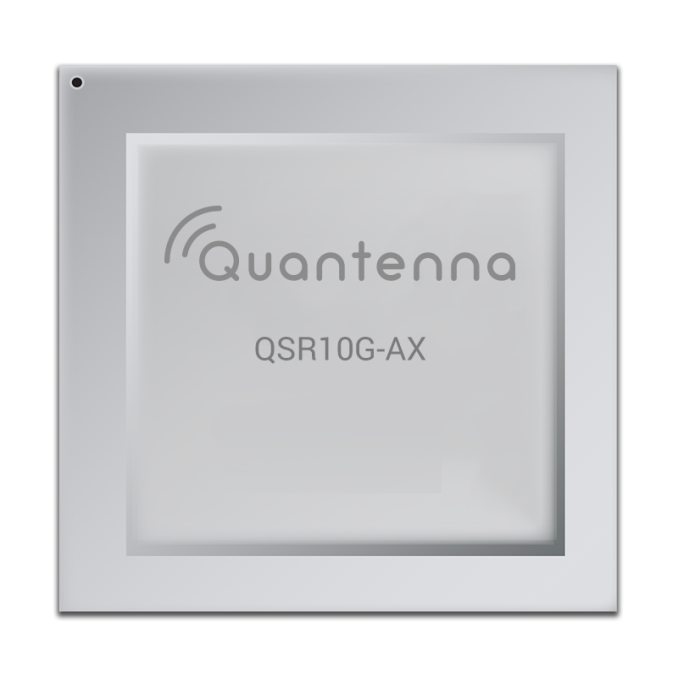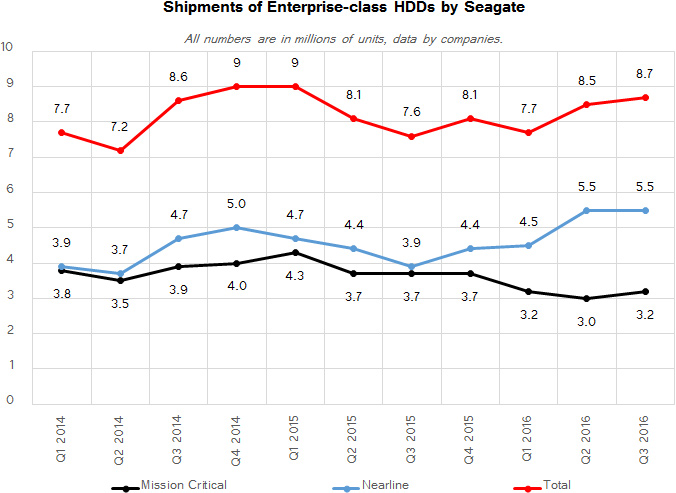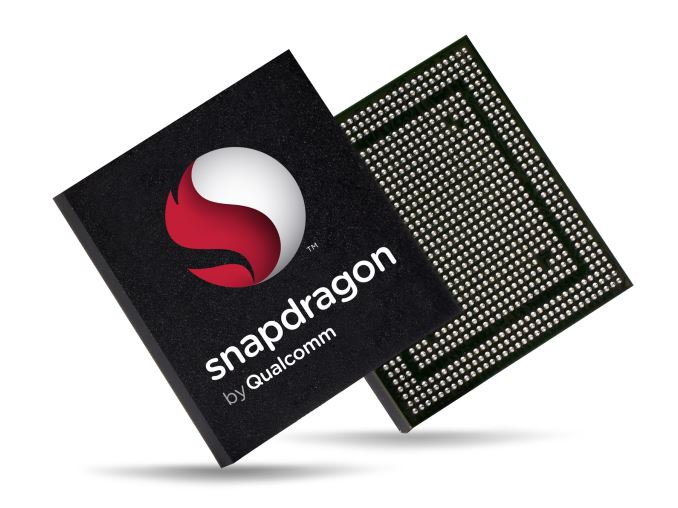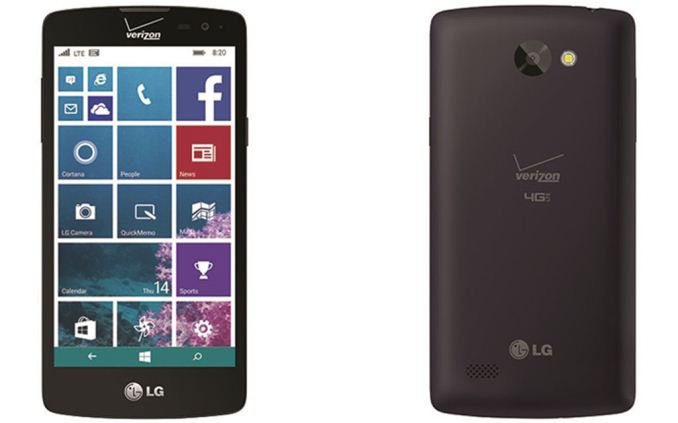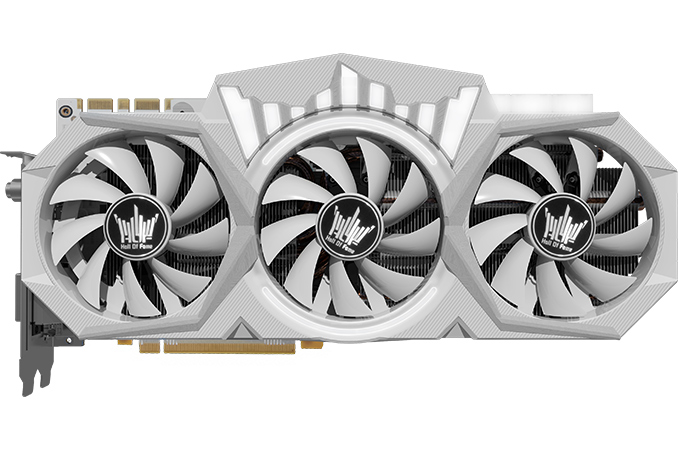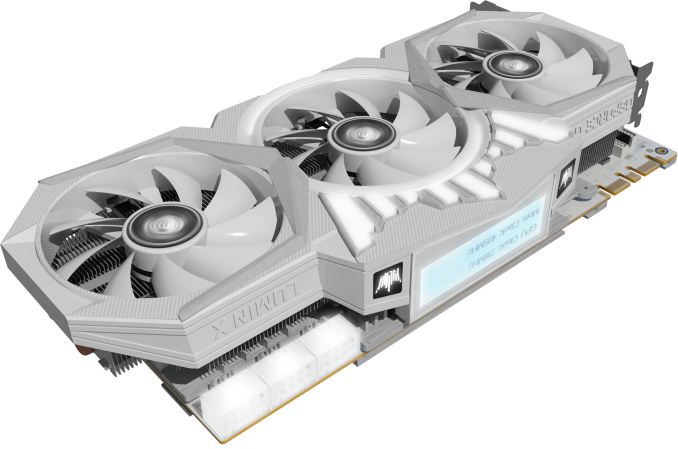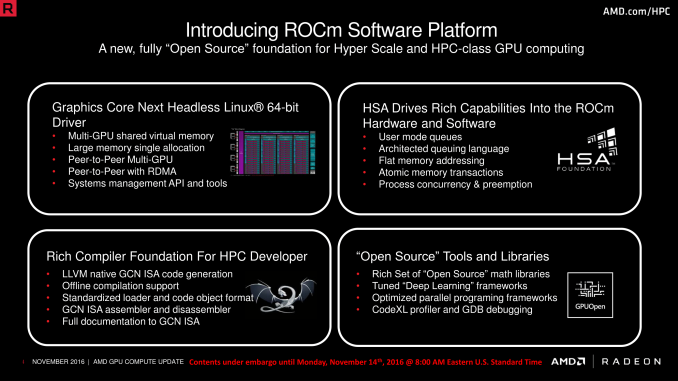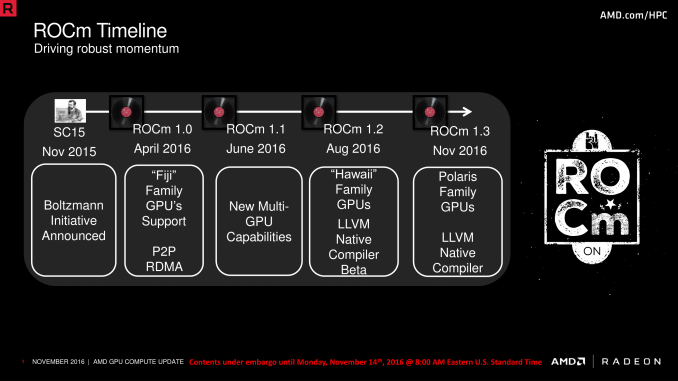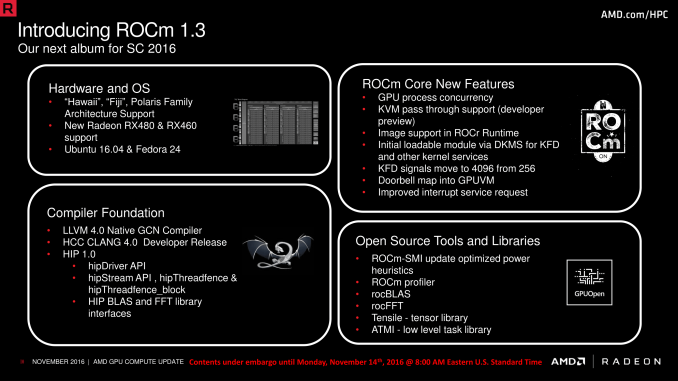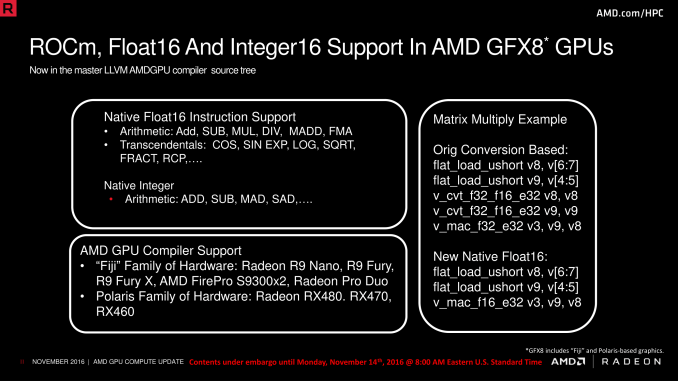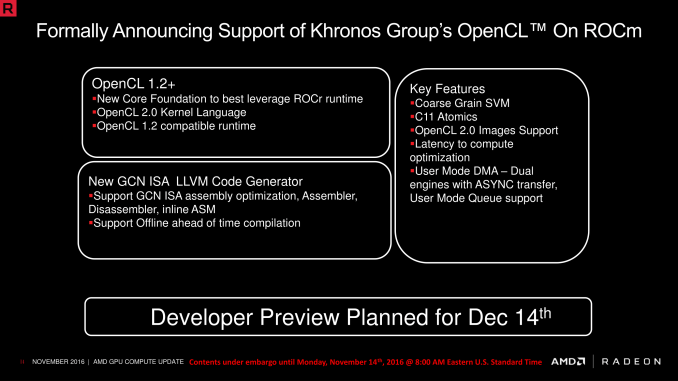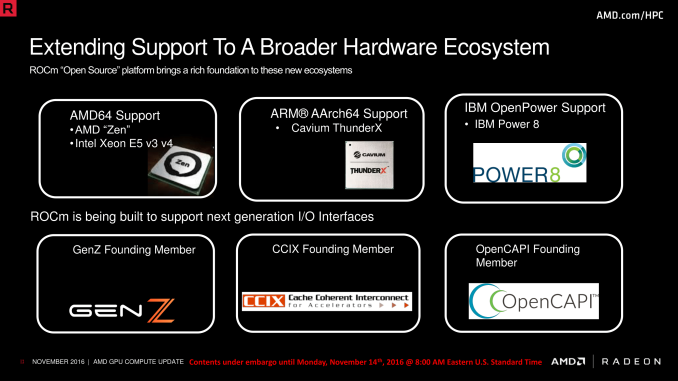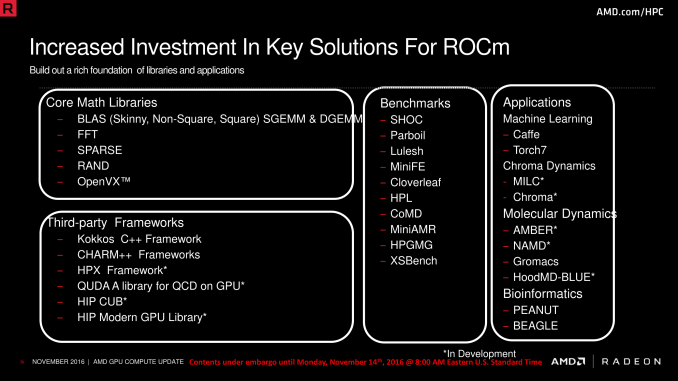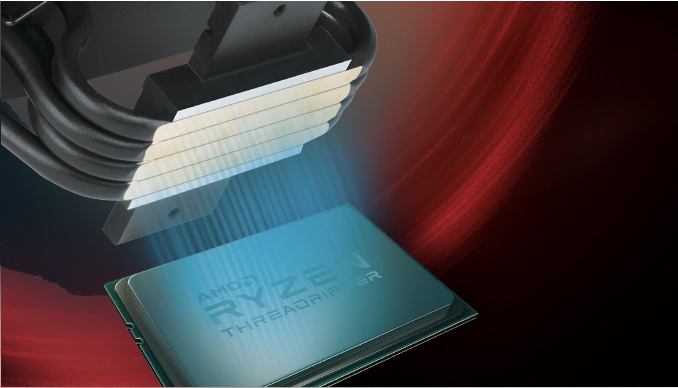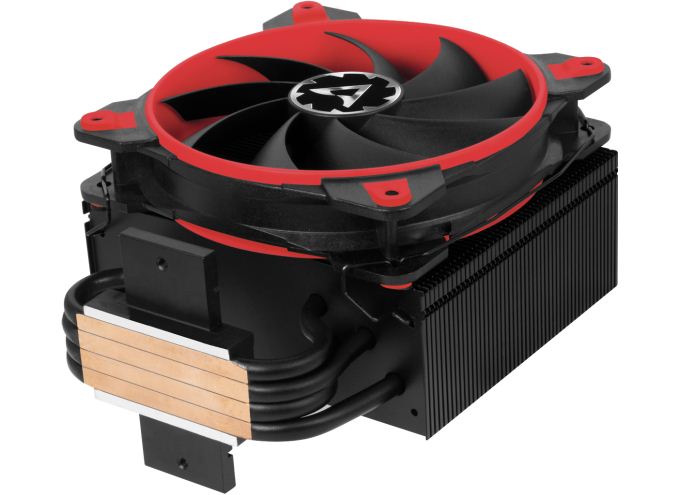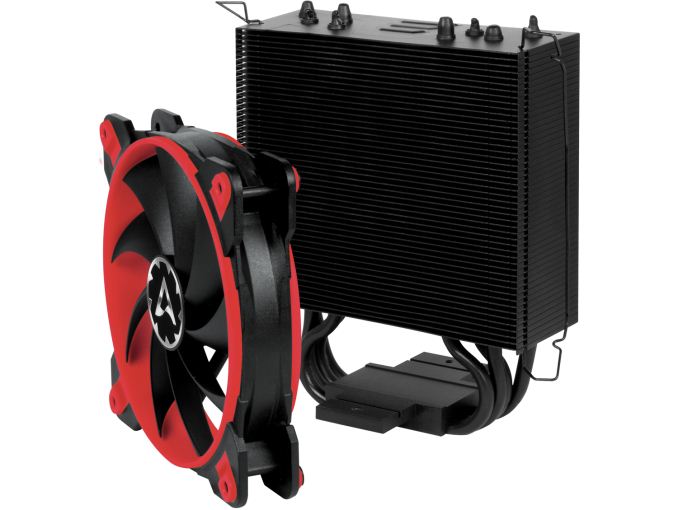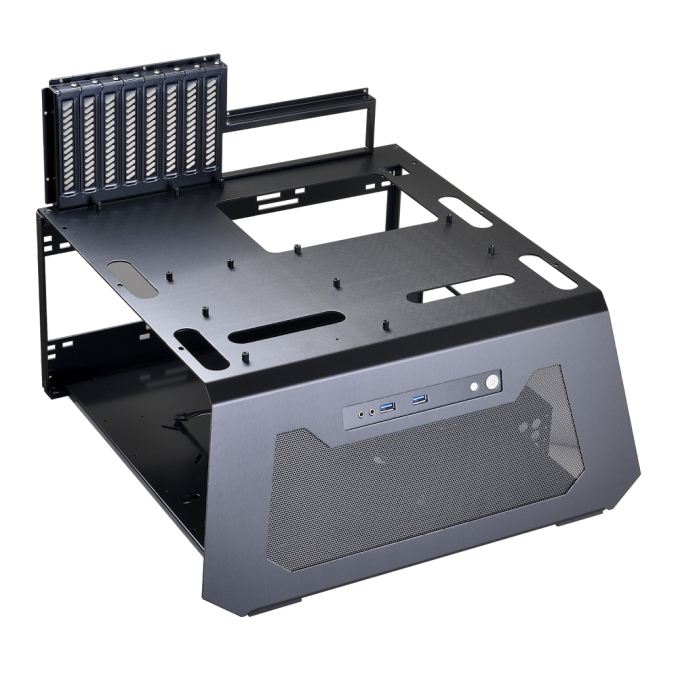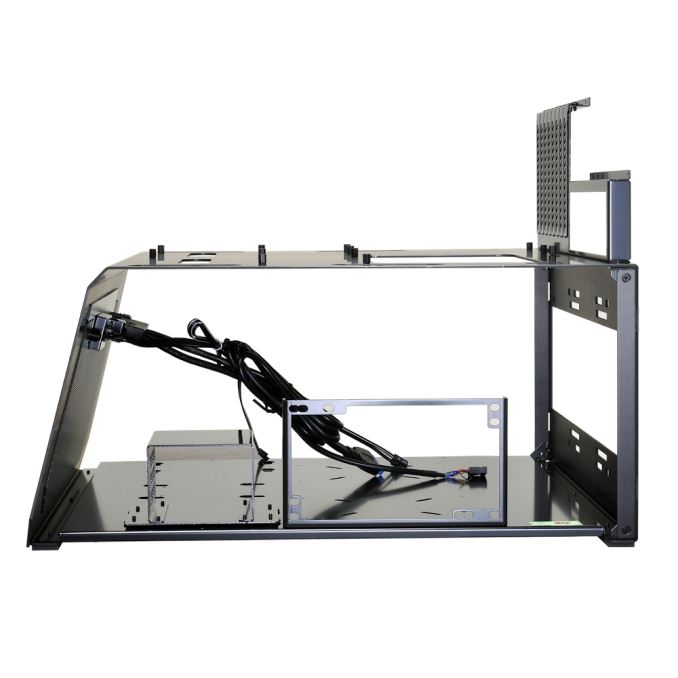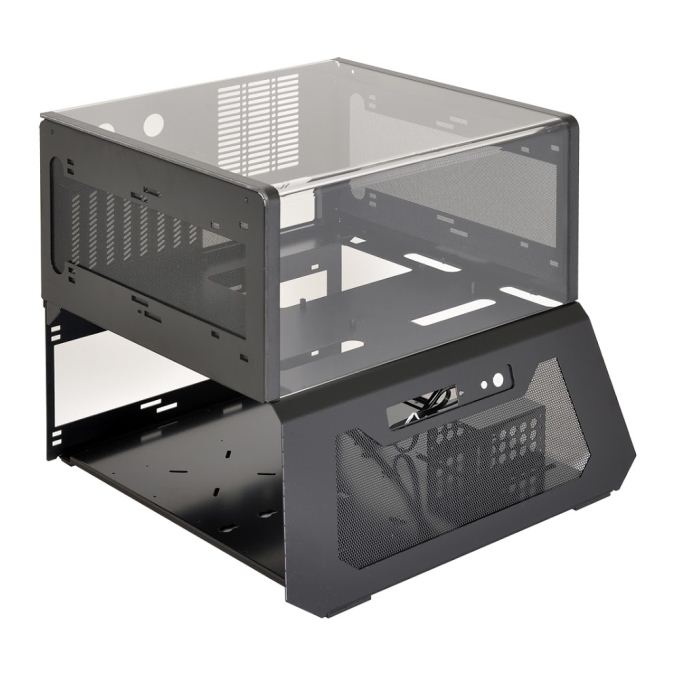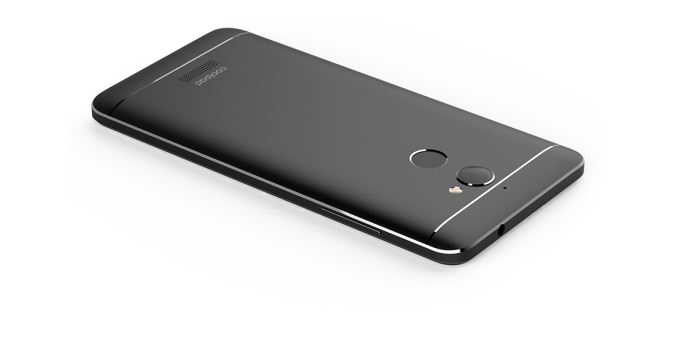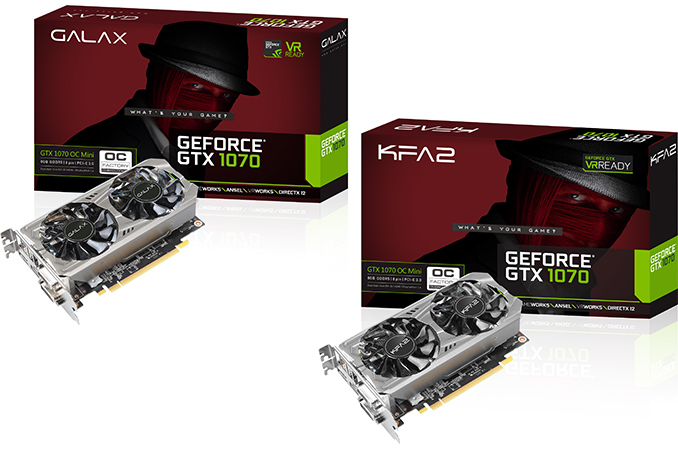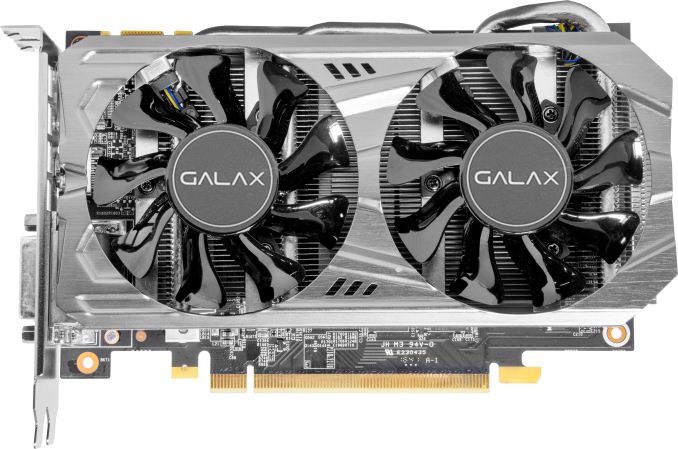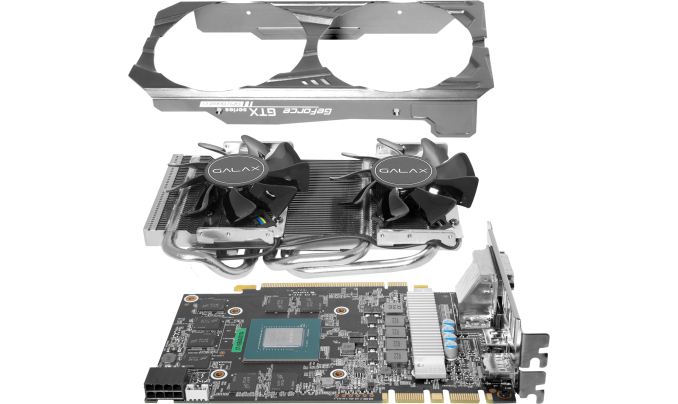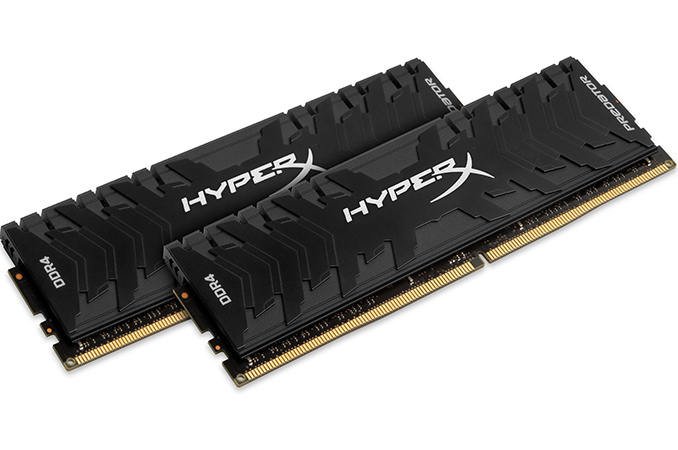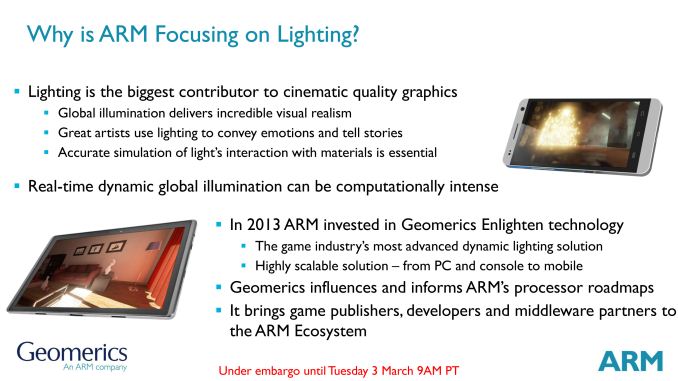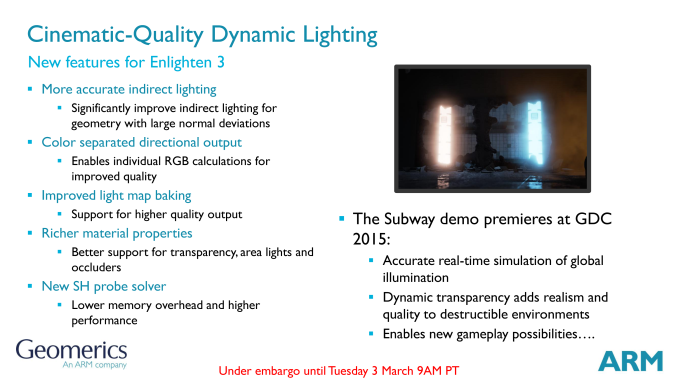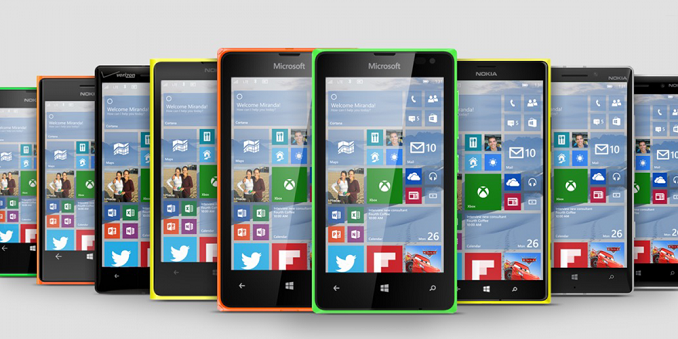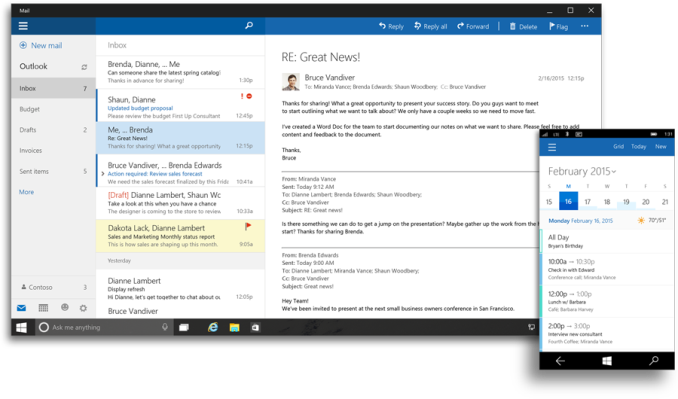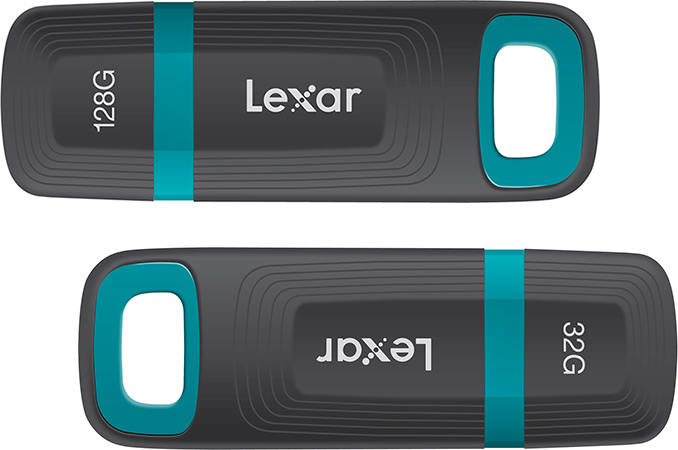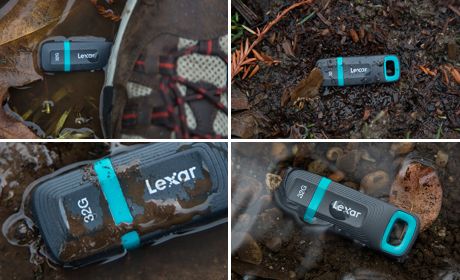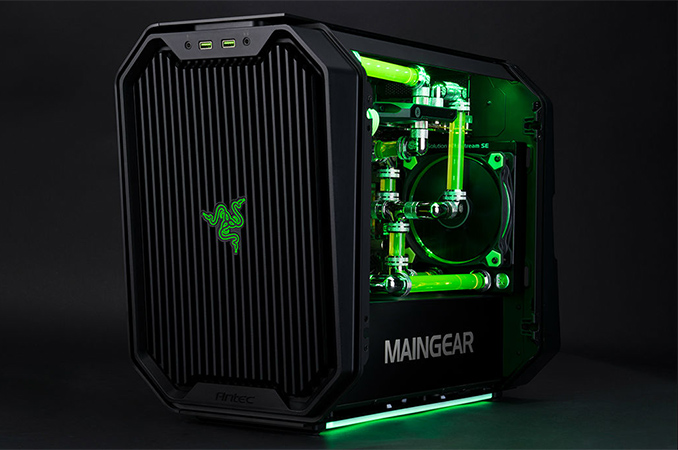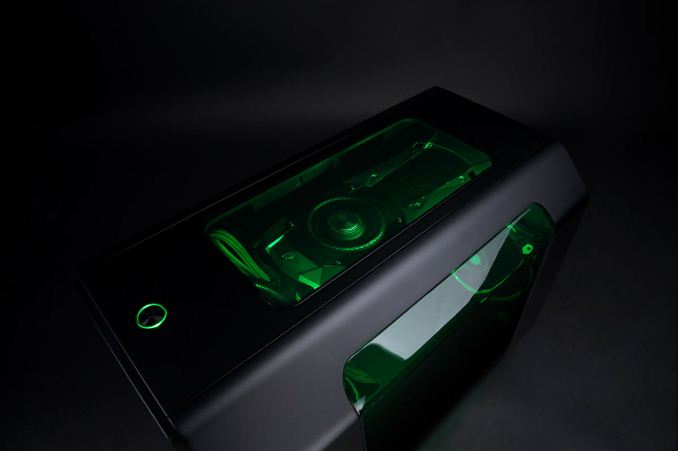Divers
-
Encore un test de temps de recharge des iPhone X
(MacBidouille)
Voici un nouveau test de recharge de l'iPhone X en utilisant plusieurs systèmes, chargeur 5W fourni avec, 5W sans fil, 7,5W sans fil, chargeur 12W filiaire et enfin au-delà de 18W avec le système de recharge rapide spécifique à l'USB-C.
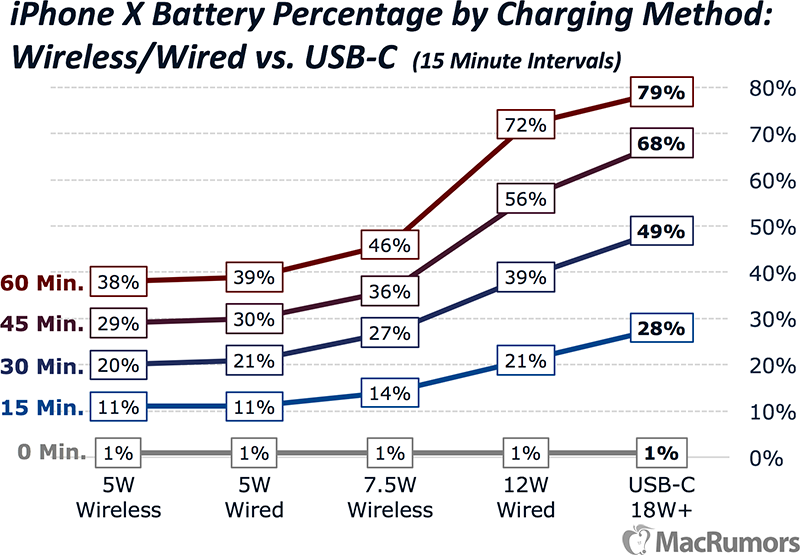
Les résultats sont sans surprise et confirment que le meilleur compromis au niveau économique est de prendre un chargeur USB-A 12W d'iPad ou équivalent, qui permet de plus que diviser par deux le temps de recharge de l'iPhone.
-
A propos de l'étanchéité de l'Apple Watch
(MacBidouille)
Nous donnons la parole à Micaël.
Je me permets de vous écrire concernent votre test de l'Apple Watch. Propriétaire d'une Apple Watch Sport depuis sa sortie, je peux vous témoigner de l'incroyable étanchéité de l'objet. Je ne la quitte jamais, ni dans ma douche, ni dans mon bain, ni quand je me baigne au lac d'Annecy, et, chose encore plus surprenante : je vais régulièrement me relaxer au Jacuzzi, hamam et sauna : la montre ne bronche pas, les chaleurs très importantes ne semblent pas lui faire peur. A ce jour, aucun signe de fatigue. N'ayez donc pas peur de la tremper dans l'eau. Il semblerait qu'Apple ait été très frileux à garantir une très bonne étanchéité, mais dans les faits, elle résiste dans problème, et c'est une vraie bonne surprise !
Bien entendu ce genre de chose est à faire à vos risques et périls avec la très forte probabilité de perdre la garantie en cas de problème.
[MàJ] Un autre témoignage très différent d'Eduardo.
J’ai une Apple Watch depuis qu’elle est sortie, et comme Micaël, moi aussi j’ai souvent nagé avec la mienne, sans problèmes jusqu’à récemment.
Il y a quelques semaine lors d’un voyage en Thailande, j’ai joué avec mon fils dans une piscine où j’avais pied. Ma montre a été en immersion à environs 60 cm maximum. L’eau était bien chaude à une trentaine de degrés. Environ une heure après le bain, une auréole s’est formée dans l’écran et a progressivement grandi.

De retour de voyage j’ai donné ma montre à un Apple Store en Angleterre, où j’habite, en mentionnant ce que j’ai fait avec. Une semaine plus tard Apple m’a gentiment replacé la montre sans aucune autre formalités. Donc merci Apple pour un bon service après vente, mais aussi, attention, cette montre n’est pas toujours aussi étanche que l’on pourrait le souhaiter.
-
HGST Ultrastar SS200 SSD: Up to 7.68 TB, 1.8 GB/s, Dual-Port SAS 12 Gbps
(AnandTech)
Western Digital has introduced a new family of Ultrastar SS200 SAS SSDs that wed high-performance with capacities up to 7.68 TB as well as relatively high endurance. The drives are aimed at mixed-use and read-intensive workloads that require not only maximum throughput, but also reliability. To guarantee the latter, the Ultrastar SS200 uses the company's Guardian technology.
The HGST Ultrastar SS200-series SSDs are designed for datacenters that rely on SAS backplanes, which are used for modern read-intensive and mixed-use workloads that benefit from performance and reliability (e.g., financial transactions, e-commerce, virtualization, database analytics, etc.). The drives come in 2.5”/15 mm form-factor with two SAS 12 Gbps ports and are based on the Guardian platform originally developed by SanDisk. The Guardian technology handles flash management, signal processing, end-to-end data path protection, power-loss protection and so on. Unlike the previous-gen products featuring the Guardian, the Ultrastar SS200 SSDs are based on a proprietary Western Digital controller and firmware, not a third-party chip with a custom firmware, the company told us. The manufacturer claims that the SS200 drives use “commercial-grade” MLC NAND memory, which probably means 128 Gbit ICs made using 15 nm fabrication process.
HGST Ultrastar SS200 Series Specifications Ultrastar SS200 Capacities 400 GB
800 GB
1,600 GB
3,200 GB480 GB
960 GB
1,920 GB
3,840 GB
7,680 GBForm Factors 2.5"/15mm Interface dual-port SAS 12 Gbps Controller Proprietary NAND 128 Gb MLC made using 15 nm process tech (?) Sequential Read 1800 MB/s Sequential Write 1000 MB/s Random Read (4 KB) IOPS 250,000 Random Write (4 KB) IOPS 86,000 37,000 Mixed Random Read/Write
(max IOPS 70%R/30%W, 4KB)154,000 90,000 Write Latency 512 B 100 ms Power Idle 3.8 W - 4.3 W Operating 9 W - 11 W (configurable) Endurance 3 DWPD 1 DWPD Encryption AES-256 Power Loss Protection Yes MTBF 2.5 million hours Warranty Five years Since different workloads mean different demands for capacities and endurance, Western Digital plans to offer capacity-optimized versions of the SS200 that can store 480 GB – 7.68 TB of data and rated for one drive write per day (DWPD) for five years as well as endurance- and performance-optimized models rated at 3 DWPD for five years that can store 400 GB – 3.2 TB of data. Power consumption of the Ultrastar SS200 SSDs is configurable and can be as low as 9 W or as high as 11 W.
When it comes to performance, the HGST Ultrastar SS200 supports sequential read speeds of up to 1800 MB/s as well as sequential write speeds of up to 1000 MB/s. Random read performance of the Ultrastar SS200 is up to 250K, whereas random write performance is rated at 86K/37K (performance-/capacity-optimized models).
Samples of the HGST Ultrastar SS200 SAS lineup of SSDs are available to select customers now and Western Digital intends to begin their volume shipments in the first quarter of 2017. The drives will be covered with a five-year warranty and will be rated at 2.5 million-hour MTBF.
Related Reading:
-
Mises à jour et téléchargements de la semaine
(Génération NT: logiciels)
Retrouvez notre résumé des mises à jour et téléchargements récemment proposés.
-
HP Updates Z8 Workstations: Up to 56 Cores, 3 TB RAM, 9 PCIe Slots, 1700W
(AnandTech)
HP has updated its most powerful dual-processor Z8 workstation line with the latest components. The new systems contain up to two Intel Skylake-SP Xeon CPUs with up to 56 cores in total, up to 3 TB of DDR4 RAM, terabytes of storage as well as up to 9 PCIe slots along with optional TB3 and 10 GbE support via add-in cards. The HP Z8 workstation will be the pinnacle of HP’s computers for personal and professional use and its price in high-end configurations will surpass even the top-of-the-range gaming PCs.
Historically, most high-end workstations relied on server platforms to support more than one CPU and thus offer higher performance than any consumer desktop. The emergence of dual-core and then multi-core CPUs a little more a decade ago changed the workstation market quite quickly and significantly. In a world with quad-core CPUs, 4-way workstations did not make a lot of sense for 99% of the users and therefore they quickly became extinct. Moreover, by now, even 2-way workstations became rare. Today, the vast majority of workstations use one multi-core CPU that provides enough compute horsepower for professional workloads, whereas GPU-based accelerators are used for tasks like simulations. Nonetheless, there are still users who need maximum x86 performance and who therefore require 2-way workstations — and the HP Z8 is aimed precisely at such users. While the Intel Xeon Scalable processors with extreme core count were developed primarily with servers in mind, the Z8 is a system that people put on their desks and therefore it has a number of specific requirements regarding noise levels, features, security, compatibility with components and so on.
One of the key components of all PCs is its microprocessor. When it comes to the HP Z8, it is based on up to two Intel Xeon Platinum 8180 with 28 cores and 205 W TDP each, which means that the system has to remove 410 W of thermal energy only from CPUs, and this requirement had a significant impact on the design of the whole system. The company did not want to use a liquid cooling system, so it had to design an air cooling solution capable of cooling down two extremely hot CPUs as well as up to 24 DDR4-2666 memory modules. Each processor has its own radiator equipped with a high-pressure air fan (which speed is regulated by BIOS in accordance with system temperature monitored by numerous sensors). In addition, the system has multiple airflow vents on the front and on the top as well as one fan that exhausts hot air on the back. According to HP, such a chassis architecture ensures that the second CPU does not re-use warm air from the first one, but since they are located in close proximity, one will always affect another with its heat. Finally, the system has additional fans that cool down other components and produce more airflow within the chassis.
Speaking of other components, the HP Z8 supports plenty of them — whatever one might want. First off, the system has four PCIe 3.0 x16 slots for graphics cards or SSDs (up to AMD Radeon Pro, NVIDIA Quadro P100 or GP100, up to 4 TB HP Z Turbo Drive Quad Pro, etc.) three PCIe 3.0 x8 (two are non-hot swap) slots for SSDs and two PCIe 3.0 x4 slots. In addition to PCIe-based storage, the Z8 also features four 2.5”/3.5” bays for SATA/SAS SSDs or HDDs as well as two external 5.25” bays that can also accommodate drive form-factor storage devices using appropriate adapters. Those who need it, HP may also install an SD card reader as well as a slim DVD or Blu-ray ODD.
When it comes to connectivity, the HP Z8 has all the bases covered. By default, the system supports two GbE connectors (powered by Intel controllers), an 802.11ac Wi-Fi + Bluetooth module (Intel Wireless-AC 8265 controller), two USB 3.1 Type-C ports and two USB 3.1 Type-A ports on the front, four USB 3.1 Type-A ports on the back, multi-channel audio connectors (a Realtek HD ALC221 controller) on the back, a TRRS audio connector on the front and so on. Meanwhile, owners can optionally order to install two 10 GbE controllers, a Thunderbolt 3-supporting add-in-card and a variety of custom components for various industries and workloads (an external audio solution for a 5.25” bay, for example).
Since many businesses and enterprises require robust security for all of their machines, the HP takes everything seriously and ships the Z8 with a whole set of security features that it calls HP SureStart. The system features secure authentication, full volume encryption, TPM 2.0, has a Kensington lock and so on.
All the CPUs, GPUs, SSDs and other components require a lot of power and HP Z8 has plenty of it. The manufacturer offers 1125 W, 1450 W or 1700 W internal PSUs with up to 90 % efficiency. The PSU is located in a compartment behind the motherboard, so chances are that HP uses proprietary units.
General Specifications of the HP Z8 2017 HP Z8 G4 CPU Family Intel Xeon Scalable processor Models Xeon Platinum 8180 (2.5GHz/3.8GHz, 38.5MB cache, 28 cores)
Xeon Platinum 8160 (2.1 GHz/3.7 GHz, 33 MB cache, 24 cores)
Xeon Gold 6152 (2.1 GHz/3.7 GHz, 30.25 MB cache, 22 cores)
Xeon Gold 6154 (3 GHz/3.7 GHz, 24.75 MB cache, 18 cores)
Xeon Gold 6148 (2.4 GHz/3.7 GHz, 27.5 MB cache, 20 cores)
Xeon Gold 6142 (2.6 GHz/3.7 GHz, 22 MB cache, 16 cores)
Xeon Gold 6136 (3 GHz/3.7 GHz, 24.75 MB cache, 12 cores)
Xeon Gold 6140 (2.3 GHz/3.7 GHz, 24.75 MB cache, 18 cores)
Xeon Gold 6134 (3.2 GHz/3.7 GHz, 24.75 MB cache, 8 cores)
Xeon Gold 6132 (2.6 GHz/3.7 GHz, 19.25 MB cache, 14 cores)
Xeon Gold 6130 (2.1 GHz/3.7 GHz, 22 MB cache, 16 cores)
Xeon Gold 6128 (3.4 GHz/3.7 GHz, 19.25 MB cache, 6 cores)
Xeon Gold 5120 (2.2 GHz/3.2 GHz, 19.25 MB cache, 14 cores)
Xeon Gold 5118 (2.3 GHz/3.2 GHz, 16.5 MB cache, 12 cores)
Xeon Gold 5122 (3.6 GHz/3.7 GHz, 16.5 MB cache, 4 cores)
Xeon Silver 4116 (2.1 GHz/3 GHz, 16.5 MB cache, 12 cores)
Xeon Silver 4114 (2.2 GHz/3 GHz, 13.75 MB cache, 10 cores)
Xeon Silver 4112 (2.6 GHz/3 GHz, 8.25 MB cache, 4 cores)
Xeon Silver 4108 (1.8 GHz/3 GHz, 11 MB cache, 8 cores)
Xeon Bronze 3106 (1.7 GHz, 11 MB cache, 8 cores)
Xeon Bronze 3104 (1.7 GHz, 8.25 MB cache, 6 cores)Graphics Entry NVIDIA Quadro P400 (2 GB GDDR5)
NVIDIA Quadro P600 (2 GB GDDR5)
AMD FirePro W2100 (2 GB DDR3)Mid-Range NVIDIA Quadro P1000 (4 GB GDDR5)
NVIDIA Quadro P2000 (5 GB GDDR5)
AMD Radeon Pro WX 3100 (4 GB GDDR5)
AMD Radeon Pro WX 4100 (4 GB GDDR5)High-End NVIDIA Quadro P4000 (8 GB GDDR5)
AMD Radeon Pro WX 7100 Graphics (8 GB GDDR5)Ultra High-End NVIDIA Quadro P5000 (16 GB GDDR5X)
NVIDIA Quadro P6000 (24 GB GDDR5X)
AMD Radeon Pro WX 9100 Graphics (16 GB HBM2)
NVIDIA Quadro GP100 (16 GB HBM2)RAM 24 DDR4 DIMMs, up to 1.5 TB of DDR4-2666
(3TB options in H1 2018, when M CPUs are available)Storage Bays 4 × 2.5"/3.5", 2 × 5.25", 1 × slim 5.25" for ODDs Options 300 GB SAS (15000 rpm)
500 GB up to 2 TB SATA (7200 rpm)
500 GB SATA SED (7200 rpm)
1 TB up to 4 TB 7200 rpm SATA Enterprise
256 GB up to 2 TB SATA SSD
256 GB up to 512 GB SATA SED Opal 2 SSD
240 GB up to 480 GB SATA Enterprise SSD
256 GB up to 1 TB HP Z Turbo Drive PCIe SSD M.2
256 GB up to 512 GB HP Z Turbo Drive PCIe SED SSD M.2
256 GB up to 4 TB HP Z Turbo Drive Quad Pro PCIe SSD
HP Slim DVD-ROM
HP Slim Blu-ray Writer
HP Slim DVD-WriterNetworking GbE Integrated Intel I219-LM PCIe GbE
Integrated Intel X722 PCIe GbE
Intel I350-T2 dual-port GbE NIC
Intel I350-T4 dual-port GbE NIC
Intel I210-T1 PCIe GbE10 GbE Intel X550-T2 dual-port GbE NIC
Intel X710-DA2 dual-port GbE NIC
Intel 10 GbE SFP+ SR transceiver
HP dual-port 10GBase-T NICWireless Intel Dual Band Wireless-AC 8265 802.11a/b/g/n/ac (2x2) Wi-Fi and Bluetooth 4.2 Combo, non-vPro PCIe 3.0
Expansion Slotsx4 2 x8 3 x16 4 Notes 1 PCIe x8 has rear bulkhead access and 2 PCIe x8 are internal access only. Slot 1: Transforms to PCIe x8 when 2nd CPU is installed.
Slots 3 and 6: are available only when 2nd processor is installed.
PCIe x16 - Available only when 2nd processor is installedUSB 3.1 2 × Type-A, 2 × Type-C 3.0 4 × Type-A 2.0 unknown Thunderbolt Optional Thunderbolt 3 add-in-card Card Reader 4-in-1 card reader PSUs 1125 W, 1450 W, 1700 W Other I/O Audio connectors, Realtek HD ALC221 controller Input Devices HP Wireless Business Slim Keyboard and Mouse Combo
HP USB Business Slim Keyboard
USB Premium wired keyboard
USB Smart Card (CCID) keyboard
3Dconnexion CADMouse
HP USB Optical Mouse
HP PS/2 Mouse
HP USB Hardened MouseDimensions 8.5 × 21.7 × 17.5 in
21.59 × 55.12 × 44.45 cmWeight Starting at 49.4 lb
Starting at 22.4 kgOperating System Windows 10 Pro for Workstations
HP Installer Kit for Linux
HP Red Hat Enterprise LinuxPrice Starting at $2,439 Now, time to talk about availability and pricing. HP intends to ship the HP Z8 workstations in October. An entry-level model with one CPU, a basic GPU and storage will cost $2,439. Meanwhile, once the system is equipped with two Xeon Platinum 8180 CPUs, NVIDIA Quadro P100/GP100 graphics, multiple PCIe SSDs, 3 TB of DDR4 memory, several 12 TB HDDs and various advanced I/O capabilities (TB3, 10 GbE, etc.), its price will easily hit tens of thousands of dollars.
It's normally at this point that a vendor such as HP states that the high-end models are likely to be sold under B2B contracts, where per-unit costs are not as severe. One OEM has told us that only 5% of sales of their high-end workstations come through direct sales for onlike pricing.
Gallery: HP Updates Its Dual-Processor Z8 Workstation: Up to 56 Cores, 3 TB RAM, 9 PCIe Slots, 1700WRelated Reading
- HP Announces Omen X Laptop: 17.3” LCD, Core i7 + GeForce GTX with Overclocking
- HP Expands Commercial VR Strategy: Z VR Backpack and Immersion Centers
- HP Launches Elite x2 1012 G2 2-in-1: 12.3-Inch Display, Kaby Lake, 1 TB SSD, 16 GB LPDDR3, TB3
- HP Z2 Mini G3 Announced: Miniature Professional Workstation with Xeon and Quadro
- HP Introduces HP ENVY 13 Laptops with Kaby Lake, USB-C, New Battery, $849
- HP Updates The Z240 Workstation With The Core i7-6700K
-
HomePod premières impressions
(MacBidouille)
Nous avons profité du voyage d'un proche à Londres pour nous faire rapporter un HomePod.
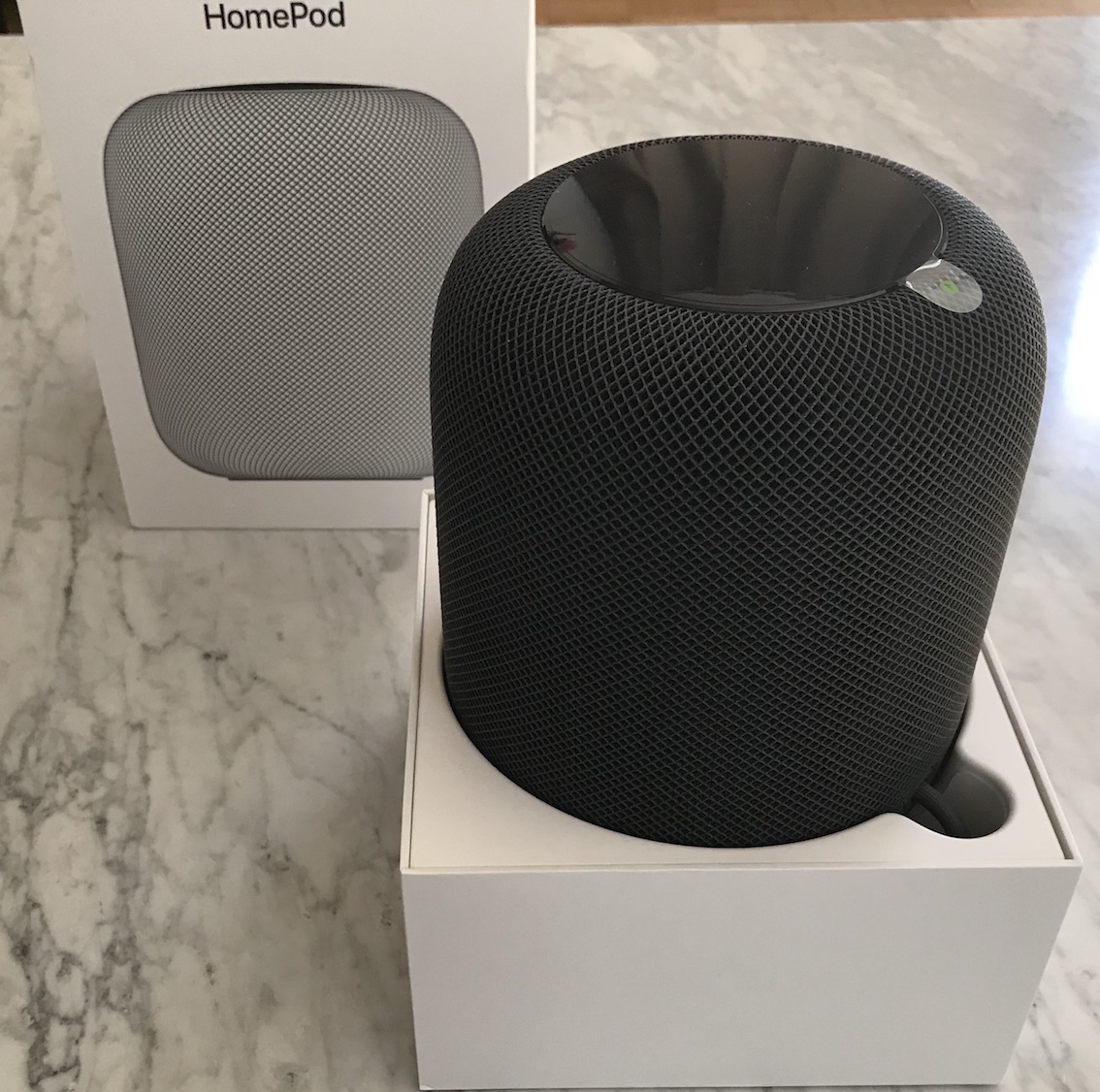
Pour commencer, il est beaucoup plus gros que nous ne le pensions en regardant les vidéos, et aussi assez lourd, 2,5 Kg.
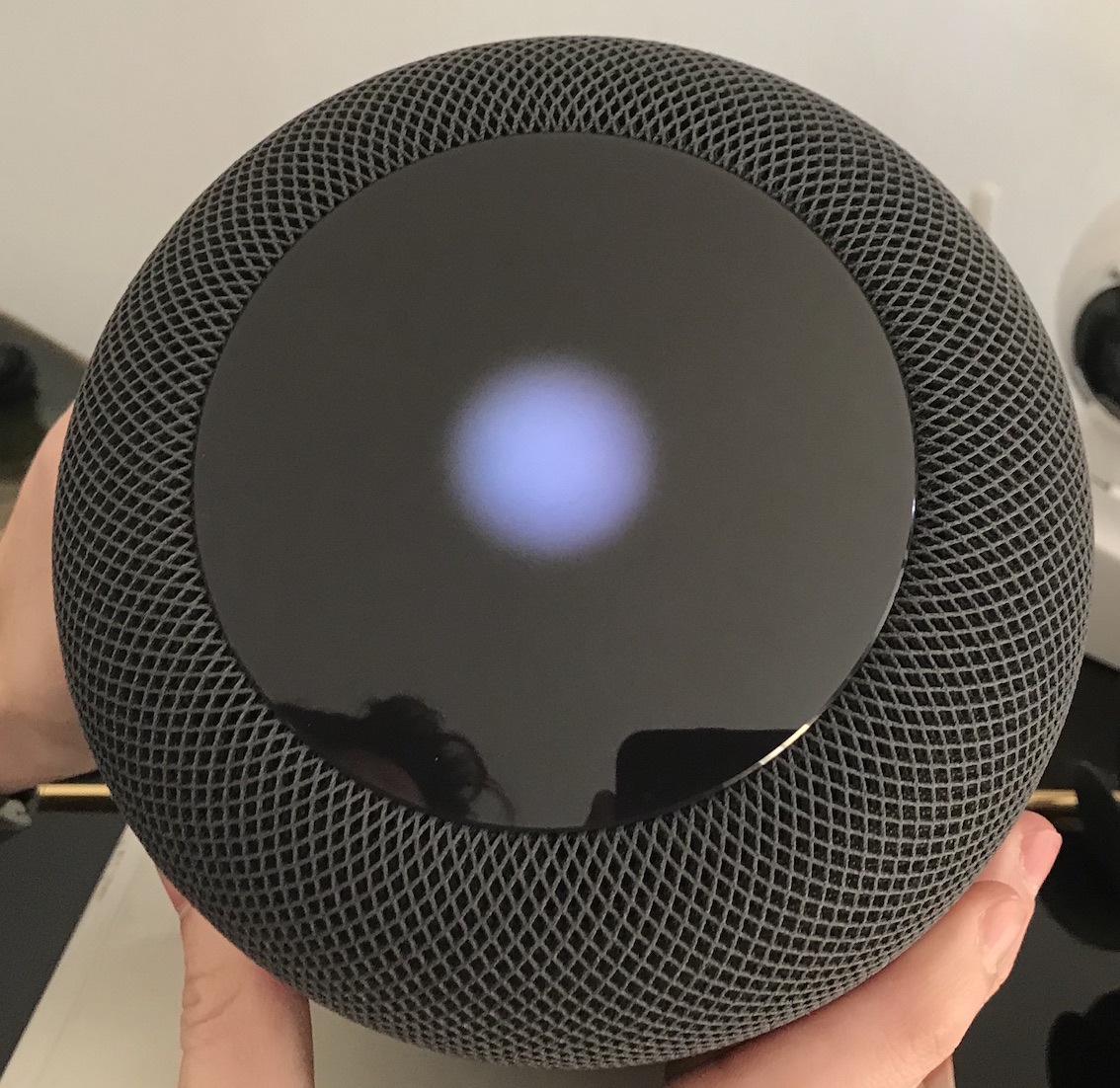
Une fois l'adaptateur UK vers FR connecté dessus et branché, sa configuration est simplissime. Il suffit d'approcher son iPhone et tout se fait automatiquement, à part rentrer son mot de passe de compte iTunes.
Au niveau qualité audio (tout en sachant combien ce genre d'impression est subjective et personnelle), le rendu sonore est bon, très bon. Le son remplit la pièce sans angles morts et on peut tourner autour sans sentir de modifications de la qualité audio ou des fréquences.
Nous avons écouté dessus de très nombreux styles de musique, du R&B au classique en passant par de la Funk et tout ce qui nous venait à l'esprit.
Le son se veut aussi neutre que possible. Nous avons toutefois constaté une accentuation des voix et des basses au détriment des médium graves. Cela se ressent particulièrement en écoutant un concerto pour violon où ce dernier est rendu de manière très réaliste, tandis que l'orchestre semble plus lointain et écrasé.
Toutefois le rendu reste intéressant pour un produit aussi compact et mono.Pour le reste, Siri n'est disponible pour le moment qu'en anglais et on lui retrouve toutes les limitations de celui des autres appareils iOS. Il n'est pas très futé, et c'est peu de le dire. En fait, cet appareil ne fonctionne encore que très médiocrement de manière autonome, sauf à lui demander d'écouter Beats One (the best radio selon Siri).
Pour le reste, l'usage le plus convivial est encore de l'utiliser en AirPlay depuis un iPhone car il est au moins facile de contrôler le volume audio sans avoir à le demander à Siri ou toucher sa surface. Cela a quand même le désavantage d'occuper un iPhone et l'on regrette que l'appareil n'ait pas comme l'Apple TV une télécommande minimaliste, au moins pour accéder au volume et aux touches d'avance et de retour.[MàJ] En dehors des tests, on peut noter que le HomePod marque un changement de paradigme chez Apple. Depuis 10 ans la société a poussé à l'individualisation des appareils, démarrée avec l'iPhone, qui est un appareil personnel. Elle l'a étendu avec l'iPad et le fait qu'elle vende de plus en plus de machines mobiles poursuit cette voie. Apple pousse à individualiser ses produits pour démultiplier sa base de clients (on n'est plus à une machine par foyer mais par personne du foyer). Le HomePod va contre cette tendance. Toutes les personnes du foyer peuvent l'interroger ou s'y connecter tant qu'elle ont un appareil iOS.
Bon, Apple pourra à terme miser sur un HomePod par pièce dans un appartement mais le HomePod tendra à devenir la base connectée du foyer pour servir de passerelle domotique.
Il faut noter quand même pour finir que le fameux "dis Siri" est de plus en plus complexe à utiliser quand plusieurs appareils se retrouvent à l'écoute de ce que vous dites. -
Quantenna Announces 802.11ax Draft 1.0-Compliant Wi-Fi Chipset
(AnandTech)
Quantenna this week introduced the industry’s first 802.11ax Draft 1.0-compliant Wi-Fi chipset for access points. The QSR10G-AX is pin-to-pin compatible with Quantenna’s commercial QSR10G Wave 3 802.11ac-compliant Wi-Fi platform and can thus be easily integrated into existing APs (e.g., routers). The next-gen 802.11ax Wi-Fi standard promises to improve spectral efficiency of Wi-Fi operation in dense deployments and also to increase maximum theoretical bandwidth of Wi-Fi networks to around 10 Gbit/s.
Wi-Fi nowadays is a pervasive technology that is used by loads of different devices. Every office or residential building has tens of Wi-Fi APs visible and many people carry two or more of Wi-Fi-enabled devices with themselves (a smartphone, a laptop, most recently, smart watches). As a result, the number of connections that every AP needs to handle is getting higher every year, which requires higher spectral efficiency and more channels to connect devices. In the recent years the 802.11 standard introduced multiple ways to improve spectral efficiency of Wi-Fi, including multiple-input multiple-output antennas (MIMO), multi-user MIMO (MU-MIMO), higher order modulation and so on. The next-gen 802.11ax will add OFDMA (Orthogonal Frequency-Division Multiple Access) to allow different devices to be served by one channel, by dedicating different sub-carriers for individual client devices.
Quantenna’s QSR10G-AX is one of the industry's first 802.11ax Draft 1.0-compliant Wi-Fi chipsets, and supports the major features of the upcoming standard (including OFDMA, 1024-QAM and so on). Furthermore, to simplify deployment, it can be installed into existing designs due to pin-compatibility with the current QSR10G chipset. From a physical standpoint, devices based on the QSR10G-AX will use Quantenna’s 12-stream Wave 3 802.11ac dual-band Wi-Fi platform, which offers 8 streams in the 5 GHz band and a further 4 streams in the 2.4 GHz band. This essentially means that manufacturers using the QSR10G can simply throw in a more advanced chip and build an 802.11ax Draft 1.0-compliant router.
Right now, Quantenna does not specify the speeds that devices based on its QSR10G-AX will be able to provide, primarily because a lot will depend on actual client equipment. In the best case scenario with the currently available devices we are looking at 1733 and 2167 Mbps using four 802.11ac streams with 600, 800 and 1000 Mbps per stream. Nonetheless, keep in mind that the whole point of the 802.11ax is not to skyrocket maximum bandwidth (even though, maximum bandwidth remains important and does improve), but to ensure the ability to robustly serve the greatest number of clients using a single AP.
Meanwhile, the availability timeframe for such routers is unknown. Quantenna plans to make the QSR10G-AX chip available to its partners in early 2017. Then, it is going to take them some time to ensure that everything operates as planned (an uneasy thing to do due to lack of 802.11ax-compliant client equipment) and only then actual devices are set to hit the market.
-
Sex.com de nouveau sur le marché
(Génération NT: logiciels)
Le très convoité nom de domaine sex.com est de nouveau à vendre. Il va faire l'objet d'une mise aux enchères. Minimum requis pour participer : 1 million de dollars.
-
Seagate Introduces New Generation of Enterprise Performance 15K HDDs with NAND Caching
(AnandTech)
Seagate on Tuesday announced its new generation of hard drives with 15K spindle speed and up to 900 GB capacity. The new HDDs use NAND caching to boost response times, offer additional SED and SED-FIPS security features at no extra cost and boast with enhanced reliability for 24x7 workloads.
The new Seagate Enterprise Performance 15K v6 HDDs come in 300, 600 and 900 GB configurations. Just like their predecessors, they use a dual port SAS 12 Gbps interface as well as a 2.5”/15 mm form-factor. The new Enterprise Performance 15K v6 hard drives have single or dual level caches: either a 256 MB of DRAM cache only or a 256 MB of DRAM cache and a 16 GB of NAND flash cache (4Kn/512E models only). The latter is used for caching of frequently used “hot” data to maximize read performance and reduce latencies (Seagate offers similar capability with its consumer-grade FireCuda and other SSHDs). It is noteworthy that Seagate reduced the amount of NAND flash compared to previous-generation 15K HDDs, but the company seems to believe that its improved caching algorithms will ensure that the new drives are faster than their predecessors.
When compared to predecessors, the new sixth-generation 15K HDDs are rated for a 27% increase in sequential read write speed: up to 315 MB/s. In addition, the drives also promise 100% faster random write performance. Seagate claims that its advanced caching algorithms promote hot data three times faster when compared to 512N drives without NAND, but it does not reveal exact performance numbers for its NAND cache. When it comes to reliability, Seagate declares 2 million hours MTBF and an annualized failure rate of 0.44%, which is in line with the predecessors.
Seagate Enterprise Performance 15K v6 Family at Glance Capacity 300 GB 600 GB 900 GB Model Number Standard Model 512N ST300MP0006 ST600MP0006 ST900MP0006 512E/4Kn ST300MP0106 ST600MP0136 ST900MP0146 SED 512N ST300MP0016 ST600MP0016 ST900MP0016 512E/4Kn ST300MP0116 ST600MP0146 ST900MP0156 FIPS 140-2 512N - ST600MP0026 ST900MP0126 512E/4Kn - ST600MP0156 ST900MP0166 Controller Seagate's proprietary LSI DRAM Cache 256 MB DRAM NAND Flash Cache 512N none 512E/4Kn 16 GB of read cache Form-Factor, Interface 2.5", SAS 12 Gbps Sustained Transfer Rate (Outer to Inner Diameter) 512N 300 MB/s ~ 210 MB/s 512E/4Kn 315 MB/s ~ 215 MB/s Average Latency 2 ms Random Read IOPS 720 IOPS Random Write IOPS 400 IOPS Power Consumption 6.9 W 7.2 W 7.6 W TCG Opal Encryption Yes Warranty 5 years MTBF 2,000,000 hours MSRP Unknown Unknown Unknown To simplify inventory management, Seagate will offer Seagate Enterprise Performance 15K v6 hard drives with its FastFormat feature, which allows formatting the drives to either 512 emulation or 4K native formats, thus reducing the number of models the manufacturer has to produce and its resellers have to keep in stock.
Nowadays 15K HDDs are no longer the fastest storage devices, even in RAID environments - modern high-end enterprise-class SSDs usually offer considerably higher random and sequential performance. Nonetheless, 10K and 15K hard drives for mission-critical applications are still used by multiple datacenters worldwide. Moreover, some say that there are deployments that use both mission-critical SSDs as well as fast mission-critical HDDs, which suggests that the new drives will have some demand. In fact, Seagate claims that the total available market for such HDDs is around six million units per quarter, but admits that sales of 15K drives have been declining recently. Still, the company itself sells roughly three million of such drives every three months. Given the very long life cycles of mission-critical HDDs, it looks like development of this 15K generation makes sense for Seagate.
Exact pricing of Seagate’s sixth-generation Enterprise Performance 15K HDDs will depend on volumes and contracts. Interested parties should get in contact directly with their local Seagate distribution partners.
-
Qualcomm Announces Snapdragon 821: 2.4 GHz Kryo
(AnandTech)
If you’ve been paying attention to the right places in the past few months it was probably obvious this was coming, but Qualcomm is announcing a higher tier to their Snapdragon 82x lineup, known as the Snapdragon 821 or MSM8996 Pro. While today’s announcement basically boils down to acknowledging that this SoC exists and that the big CPU cores have a clock speed of 2.4 GHz, it’s likely that in the months since the Snapdragon 820 was released Qualcomm engineering staff have been working on resolving various errata as well as improving their floorplanning and architecture implementation. It’s also likely that we will see a few new or otherwise revised IP blocks.
Snapdragon 820 Snapdragon 821 CPU Perf Cluster 2x Kryo 2.2 GHz 2x Kryo 2.4 GHz CPU Power Cluster 2x Kryo 1.6 GHz 2x Kryo >2 GHz GPU Adreno 530 624 MHz Adreno ??? ~650 MHz What isn’t in this announcement is that the power cluster will likely be above 2 GHz and GPU clocks look to be around 650 MHz but without knowing whether there are some changes other than clock relative to Adreno 530 we can’t really estimate the performance of this part. However, this information can be subject to change depending upon what happens at Qualcomm. It's important to note here that while these changes may seem to be small that improvements in the implementation of an SoC can have a dramatic effect on performance and power. I’m sure we’ll be learning more about this SoC in the coming months so for now we’ll just have to wait and see what comes next.
-
Verizon Launches LG Lancet Windows Phone
(AnandTech)
Today Verizon announced a new smartphone coming to their network, and it is the LG Lancet. LG originally did produce Windows Phone 7 devices, but left the market before Windows Phone 8 shipped. They are back, with a budget device for the Verizon network.
The LG Lancet is not very exciting hardware, but it does have a couple of things worth mentioning. The phone ships with the Qualcomm Snapdragon 410 SoC, which is a quad-core 1.2 GHz chip based on the Cortex A53 64 bit CPU. The 410 shows a modest performance gain over the outgoing Snapdragon 400, but as Brandon saw in the Moto E review, it seems to be fairly competitive in the power consumption department.
LG Lancet SoC MSM8916 1.2 GHz Snapdragon 410 RAM/NAND unknown RAM, 8 GB NAND + microSD Display 4.5” 854x480 IPS LCD Network CDMA LTE (Verizon) Dimensions 129.8 x 64.8 x 10.7 (mm) Weight 143 grams Camera 8MP rear camera with Flash, VGA FFC Battery 2100 mAh OS Windows Phone 8.1 Price $19.99 on 2 year, $5/month, or $120 outright Some specifications courtesy of Windows Central
The rest of the device continues with the budget nature for a North American smartphone experience. It is just a 4.5 inch display (although lots of people will prefer that) but with just an 854x480 resolution. The extra 54 pixels on the vertical will be for the onscreen buttons for this phone, so unlike some other devices with onscreen buttons you won’t have to worry about them blocking the standard display real estate. The RAM is not listed, and the storage is only 8 GB with 4 GB available to the end user. It does support micro SD expansion though so you can add more space if necessary.
The rear camera is an 8 MP version and the front facing camera is only VGA, so imaging is not going to be a highlight of this device unless that rear camera is really something.
The only other thing to note is that this will be the first Windows Phone on Verizon to support HD Voice. HD Voice is a wonderful thing that really improves the call quality, but it suffers from a lack of compatibility and generally only works with two devices on the same carrier. Still, Verizon is the largest carrier in the USA so that’s a big market.
The Lancet is available now on Verizon for $5 per month on Verizon Edge, or you can purchase it outright for $120. For those that prefer to purchase on the two year contract, it is current available for $19.99 on contract.
Source: Verizon
-
Hotel Safe Scam
(Schneier on Security)
This is interesting:
Since then, his scams have tended to take place in luxury hotels around the world.
Typically, he would arrive at a hotel, claim to be a guest, and then tell security that he had forgotten the combination code to his safe.
When hotel staff helped him to open the safe, he would pocket the contents and make his escape.
Doesn't the hotel staff ask for ID before doing something like that?
-
Palit GeForce GTX 1080 Ti HOF Limited Edition Announced: 1.75 GHz and Onboard LCD
(AnandTech)
Palit Microsystems plans to release a new factory-overclocked limited edition graphics adapter based on NVIDIA’s GeForce GTX 1080 Ti GPU under its GALAX and KFA2 brands. The card was developed from scratch and will be among the highest-performing video cards in the industry due to a rather extreme GPU frequency. It also comes with exclusive features that will further push it up on price.
The GeForce GTX 1080 Ti HOF Limited Edition graphics adapter from GALAX and KFA2 are based on NVIDIA’s GP102 GPU, clocked at 1645/1759 MHz (base/boost) and suses a custom 12-layer PCB developed by Palit. The add-in-board (AIB) features a 12+3-phase VRM and three 8-pin PCIe power connectors in a bid to guarantee stable operation of the GPU at significantly increased clock rates (165/177 MHz higher than NVIDIA’s recommendations) and enable further headroom for overclocking.
To cool down the GPU and memory, Palit uses a special cooling system that relies on a huge heatsink with five thick heatpipes as well as three fans. As an added bonus, the cooling system is equipped with an LCD screen that displays current GPU and memory frequencies, the GPU temperature, the GPU voltage and other important information. Since the cooler is very large, it takes three slots, meaning multi-GPU system builds with this card more complicated. Traditionally, large cooling solutions are equipped with a backplate and the cooler on the GeForce GTX 1080 Ti HOF Limited Edition is not an exception. As for outputs, the graphics adapter comes with three DisplayPort 1.4 headers, one HDMI 2.0b and one DVI-D.
With its factory overclocked GPU, the GeForce GTX 1080 Ti HOF Limited Edition from GALAX and KFA2 is going to be one of the highest-performing gaming graphics cards around. In fact, single precision compute performance of the AIB will be between 11.79 and 12.6 TFLOPS (depending on exact frequency), which is higher than that of NVIDIA’s Titan X and Titan Xp. The latter still have advantages when it comes to ROP count and memory bandwidth, but in at least certain cases the GTX 1080 Ti HOF Limited Edition is going to be faster.
NVIDIA GPU Specification Comparison NVIDIA Titan Xp GALAX/KFA2
GeForce GTX 1080 Ti HOF Limited EditionNVIDIA
GeForce
GTX 1080 TiNVIDIA Titan X
(Pascal)NVIDIA GeForce GTX Titan X
(Maxwell)CUDA Cores 3840 3584 3584 3072 Texture Units 240 224 224 192 ROPs 96 88 96 96 Core Clock 1481 MHz? 1645 MHz 1481 MHz 1417 MHz 1000 MHz Boost Clock 1582 MHz 1759 MHz 1582 MHz 1531 MHz 1075 MHz TFLOPs (FMA) 12.1 TFLOPs 12.6 TFLOPs 11.3 TFLOPs 11 TFLOPs 6.1 TFLOPs Memory Clock 11.4 GT/s GDDR5X 11 GT/s
GDDR5X10 GT/s GDDR5X 7 GT/s GDDR5 Memory Bus Width 384-bit 352-bit 384-bit 384-bit RAM 12 GB 11 GB 12 GB 12 GB RAM Bandwidth 547.2 GB/s 484 GB/s 480 GB/s 336 GB/s FP64 1/32 FP16 (Native) 1/64 N/A INT8 4:1 N/A TDP 250W 250W++ 250W 250W 250W GPU GP102 GM200 Transistor Count 12B 8B Die Size 471mm2 601mm2 Manufacturing Process TSMC 16nm TSMC 28nm Launch Date 04/06/2017 ~05/2017 03/10/2017 08/02/2016 03/17/2015 Launch Price $1200 ~$1200 $699 $1200 $999 Meanwhile, pricing of the GALAX/KFA2 GeForce GTX 1080 Ti HOF Limited Edition will match pricing of the two aforementioned cards that are sold exclusively by NVIDIA for $1200. Overclockers UK offers to pre-order the card from KFA2 for £949.99 (with ETA in late May), which equals to $1227. It is noteworthy that in the UK the card will be called the KFA2 GeForce GTX 1080 Ti HOF 8 Pack Edition, after professional overclocker 8 Pack who works for Overclockers.
Related Reading:
- Using PC-BSD (BSD DevCenter)
-
AMD @ SC16: Radeon Open Compute Platform (ROCm) 1.3 Released, Boltzmann Comes to Fruition
(AnandTech)
Kicking off this week is SC, the annual ACM/IEEE sponsored supercomputing conference in the United States. At this show last year, AMD announced the Boltzmann Initiative, their ambitious plan to overhaul their HPC software stack for GPUs. Recognizing that much of NVIDIA’s early and continued success has been due to the quality of the CUDA software ecosystem, AMD set out to create an ecosystem that could rival and even interact with CUDA, in hopes of closing the software gap between the two companies.
Now at SC16, the company is both updating participants on the current state of Boltzmann, along with providing the latest software update to the project. Now going under the name the Radeon Open Compute Platform – ROCm – AMD shipped the initial 1.0 version of the platform back in April of this year. That initial release however was, relative to the complete scope of Boltzmann, only the tip of the iceberg. A good deal of what AMD ultimately wanted to do with Boltzmann was not ready (or at least still in beta) with earlier ROCm releases, and it’s not a coincidence that ROCm 1.3, being announced today at the show, is much closer to completing the Boltzmann Initiative.
So where do things stand for AMD one year later with ROCm 1.3? Both the Heterogeneous Compute Compiler (HCC) and the Heterogeneous-compute Interface for Portability (HIP) have made significant progress. ROCm 1.3 introduces the shipping version of the native compiler, which as AMD previously discussed is based around LLVM. Of all of the parts of the Boltzmann plan, the native compiler is perhaps the most important part, as it and the associated driver/APIs/interfaces are the key to making HPC software work on AMD’s platform.
ROCm 1.3 also introduces several new features to the platform as a whole. Of particular note here, AMD has enabled support for 16bit floating point and integer formats within the platform. As regular readers may recall, AMD has offered native support for 16bit formats since GCN 1.3 (Tonga/Fiji), so this functionality is finally being exposed on ROCm. It should be noted however that this is not the same as packed 16bit formats, which allow for AMD’s 32bit ALUs to process two 16bit instructions at once, gaining FLOPS versus using 32bit instructions. Instead, the immediate purpose of this is to allow developers to leverage the space-saving aspects of 16bit data formats, reducing memory and register pressure by using smaller data types when lower precision is suitable, and cutting down on the number of instructions as well by avoiding unnecessary conversions.
Meanwhile, though AMD won’t comment on it, with the launch of the Playstation 4 Pro, we now know that AMD has an architecture supporting packed 16bit formats. Consequently, it’s widely expected that the next iteration of AMD’s dGPUs, Vega (incorporating GFX IP 9), will support these packed formats. In which case by exposing 16bit data types and instructions now, AMD is laying the groundwork for what will be following in 2017.
Moving on, AMD has now added “OpenCL 1.2+” support to ROCm. AMD’s history with OpenCL has been long and somewhat tortured – AMD’s bet on OpenCL has not been well rewarded – so this one caught my eye. The oddly named “1.2+” support reflects the fact that AMD isn’t implementing a full OpenCL 2.0 stack on top of ROCm, but rather they’re targeting existing OpenCL 1.x users. The end result is that ROCm’s OpenCL support is based around the 1.2 stack, but that it supports a select subset of the OpenCL 2.0 kernel language. The OpenCL runtime itself radically changed with 2.0, due to the introduction of SPIR-V, so how AMD is going about supporting OpenCL is important. They are essentially offering OpenCL 1.x users a souped up version of OpenCL 1.x, backporting several 2.0 features while retaining the 1.2 runtime. It’s a logical choice to offer a path forward to their existing OpenCL customers, and consistent with AMD’s previous sentiment on OpenCL. AMD’s future is in HCC and C++, not OpenCL.
AMD has made good progress on the HIP front as well. HIP itself as it 1.0, and to demonstrate their progress, AMD is touting how easy it was to port the CAFFE deep learning framework from CUDA to HIP. Using the HIPify Tools for automatic conversion, AMD was able to translate 99.6% of the code automatically. This is admittedly less than 100% – AMD has been upfront before that they may always be playing catch-up and won’t necessarily be able to replicate NVIDIA driver features 1-for-1 – but it’s significant progress. Ultimately AMD was able to finish the feature-complete port in less than 4 days for a 55K line project. And words can’t stress how important this is for AMD; they need CUDA interoperability to be able to break into what has become a $240mil/quarter business for NVIDIA, so successful ports with HIP are critical to becoming a viable alternative. Further adding to AMD’s success with CAFFE, the HIPified version of the framework is already faster than the OpenCL version, never mind the fact that the OpenCL version had to be created practically from scratch.
Meanwhile ROCm 1.3 also includes some new hardware functionality as well. AMD Polaris hardware is now supported, including both the Radeon RX 400 series and the Radeon Pro WX series. In the grand scheme of things AMD’s Polaris parts aren’t all that great for HPC due to a lack of total throughput – interestingly, I’m told the Radeon R9 Nano has been the big winner here due to its combination of throughput and best perf-per-watt for a Fiji-based part – and adding Polaris is more about opening the door to developers. Prior to this only Fiji and Hawaii GPUs were supported, so with the addition of Polaris support developers can develop and test against their local machines, and then deploy for production use on Hawaii/Fiji HPC gear.
AMD is also using SC16 to further outline their platform support plans. Along with x86 support – including of course, Zen – AMD is also going to be supporting ARMv8 AArch64, and IBM POWER8. The former is an interesting choice since ARM in the server space has to date been mostly about microservers and other forms of high density computing, while adding POWER8 support is a logical step to take in order be able to play in the same hardware space that NVIDIA does as part of OpenPOWER’s “anyone but Intel” consortium. The addition of POWER8 support also offers an interesting sign of where AMD might go in the future; along with POWER8, they are also supporting the OpenCAPI interface that future POWER CPUs will use. Could this mean that AMD will offer HPC-class GPUs with more than just PCIe support in the future?
Wrapping things up, while ROCm 1.3 brings AMD much closer to fulfilling the original vision of the Boltzmann Initiative, the company still has some work to do and is offering a brief look at their future software plans. Now that AMD has the core platform sorted out, they’re going to be increasing their investment in major libraries and frameworks used by many HPC applications. This includes fundmental math libraries like BLAS and FFT, but also major frameworks like AMBER and the aforementioned CAFFE. Along with presenting a sane, developer-friendly language, one of CUDA’s other great strengths has been libraries/frameworks, so this is where AMD will be catching up next. And while AMD isn’t laying out any specific dates on the hardware or software side, the way the stars are aligning right now, I’m not going to be too surprised if they’ll be ready to finally fully tackle NVIDIA with the 1-2-3 punch of ROCm, optimized software libraries, and Vega GPU hardware by the time we’re reporting on SC17 at this time next year.
Gallery: ROCm 1.3 Press Deck
-
L'iPhone 7 plus démonté
(MacBidouille)
iFixit a démonté l'iPhone 7 plus. Globalement, son design intérieur est très similaire à celui du précédent modèle.
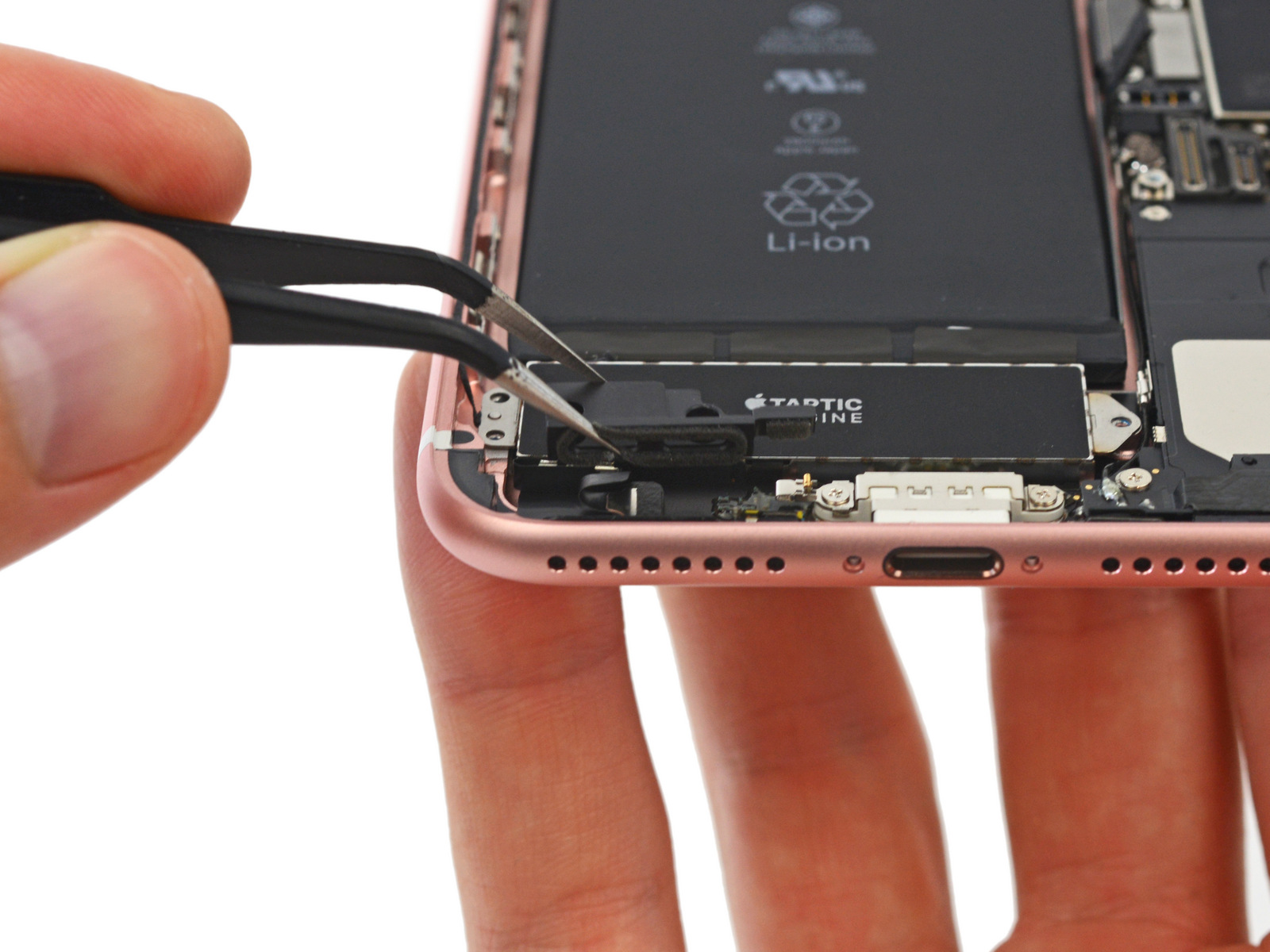
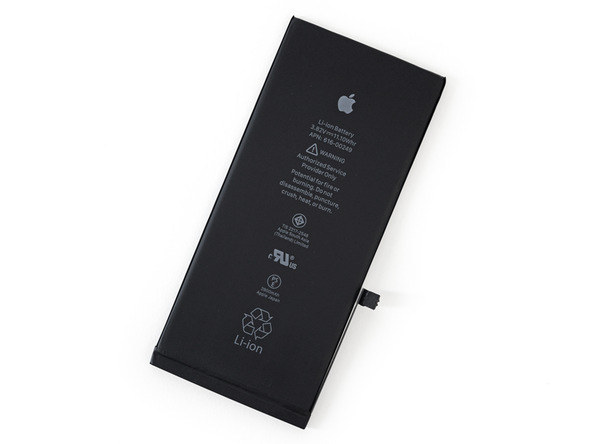
La batterie est maintenant une 2900 mAh contre 2750 pour l'iPhone 6 plus.

Voici le double capteur photo. Comme vous pouvez le voir, Il y a deux connecteurs, ce n'est donc pas une fabrication exclusive pour l'iPhone mais deux capteurs placés côte à côte.
La plus grosse différence est certainement l'ouverture, qui se fait maintenant sur le côté. Il est probable que ce soit lié aux nouveaux procédés de fabrication visant à le rendre étanche.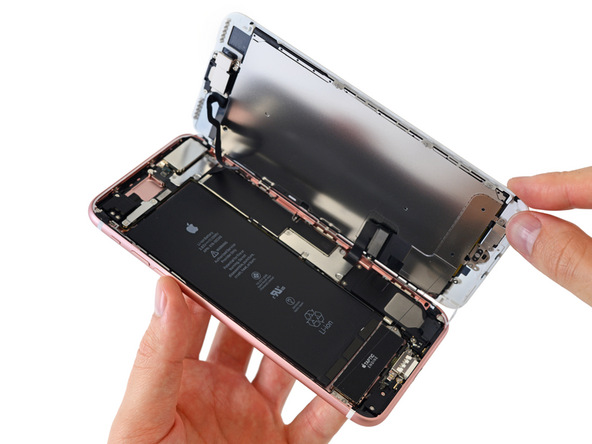
On notera pour finir que l'ancien emplacement du port jack est maintenant occupé par autre chose, en particulier le système haptique devenu plus volumineux, probablement pour gérer aussi le nouveau (pseudo) bouton home.
-
Arctic Announces the Freezer 33 TR: An Air Cooler Designed for AMD’s Threadripper
(AnandTech)
Arctic has announced a special version of its popular Freezer 33-series cooler, this time designed specifically for AMD’s Ryzen Threadripper microprocessor. The cooler is not only physically compatible with the Socket TR4 mounting mechanism, but the base has been extended to cover Threadripper’s integrated heatspreader (IHS) in order to improve cooling efficiency.
The MCM architecture of AMD’s EPYC and Threadripper processors required AMD to design a CPU form-factor and socket that is explicitly rectangular rather than square-like. Since AMD’s Socket TR4 for the Threadripper CPUs derives from the Socket SP3r2 for servers, it has the same shape and dimensions. Most of the coolers on the market today were not designed for such a large rectangular contact like TR4 and they cannot cover 100% of its surface because they were developed for square-like CPUs. So while it is possible to use an existing cooler for AMD’s TR4 CPUs using special mounting brackets, its base does not cover part of the IHS and this is potentially going to lower its efficiency - cooling companies are now moving forward with larger TR4 specific designs to address this market.
The Freezer 33 is currently the flagship air CPU cooler from Arctic. The device has four 6-mm copper heatpipes, 49 aluminum fins that are 0.4-mm thick, and a 120-mm fan. The main difference between the new Freezer 33 TR versus the regular Freezer 33 is a slightly longer copper base, as well as the black and red color scheme (black and white scheme is also available). Other than that, everything is the same. By redesigning the base of its Freezer 33 TR cooler for the sTR4, Arctic is aiming to enhance its thermal performance for AMD's new CPUs and potentially give some additional overclocking headroom for those who need it.
Arctic claims that the Freezer 33 TR was developed to cool down CPUs with up to 200 W TDP, but its maximum cooling capacity is 320 W. The design of the cooler can support the installation of two fans (to maximize potential) as well as supporting the installation of memory modules of moderate height. Arctic’s fans for the Freezer 33 TR use fluid dynamic bearing motors, feature 200-1800 RPM speed and are PWM-controlled to minimize noise under light loads.
The redesign of the base of the cooler has affected the compatibility of the Freezer 33 TR cooler with mainstream Intel platforms. The new cooler is thus only compatible only with AMD’s TR4 and AM4, as well as Intel’s LGA2011-3 as well as LGA2066 sockets.
The Arctic Freezer 33 TR is already available directly from the company and its resellers are set to get the cooler in the coming days or weeks. The product costs €47.99 and will be one the most affordable coolers designed specifically for AMD’s Ryzen Threadripper.
Related Reading
- Enermax Launches LiqTech TR4 AIO LCS for AMD's Threadripper: 100% IHS Coverage, 500 W TDP
- G.Skill Unwraps Flare X 32 GB and 128 GB DDR4 Kits for AMD Threadripper: Up to 3600 MT/s
- The AMD Ryzen Threadripper 1950X and 1920X Review: CPUs on Steroids
- Unannounced AMD Ryzen Threadripper 1920 CPU in Motherboard Support Lists
- Patriot Publishes List of AMD Ryzen Compatible DIMMs: Up to DDR4-3400, 64 GB
- AMD Announces Ryzen AGESA 1.0.0.6 Update: Enables Memory Clocks Up To DDR4-4000
-
Lian Li Launches PC-T70 Test Bench
(AnandTech)
Lian Li has been one of the few large case manufacturers to consistently offer test benches over the years, and they have now launched their newest model, the PC-T70. First unveiled at CES 2017, this new test bench was developed with feedback from PC hardware reviewers and it has been designed with an eye towards easy access and simple hardware swapping. There is also an optional accessory kit that encloses the test bench with an acrylic cover, which simulates a closed-air environment and allows for testing conditions that more closely match a regular closed case. For those who would rather have the whole kit from the start, Lian Li will also be offering the PC-T70FX, which comes with the acrylic cover and side panels included.
Starting off with the fundamentals, the PC-T70 is manufactured from both aluminium and steel and it is available in both black and white. It can handle motherboards ranging from Micro-ATX to E-ATX, and it has eight expansion slots that support cards up to 330mm in length, though longer cards should be fine as well if you don't install the acrylic cover. There is one small and six large pass-through ports that are used to cleanly route cables to the lower half. The bottom chamber can handle one ATX power supply up to 330mm in length, and it is also where you can install your choice of either five 2.5” and one 3.5” storage drives or one 2.5” and two 3.5” storage drives. There is also mounting space for some liquid cooling hardware, namely an up to 360mm radiator, a reservoir, and a pump. The front of the test bench features a small I/O area consisting of a 3.5mm audio input, a 3.5mm audio output, two USB 3.0 ports, and both power and reset buttons.
If you have more advanced cooling needs, or if you're a reviewer that wants to be able to simulate a closed-air case environment, the T70-1 option kit is an accessory that is going to be of great interest:
As mentioned above, the optional T70-1 upgrade kit encloses the test bench with an acrylic cover and side panels that serve as radiator mounts. The idea is that by enclosing the motherboard and other heat-generating components, reviewers will be able to simulate closed-air case environments that are more representative of the insides of regular PC cases. This should ensure more accurate testing of both thermals and acoustics. It should be mentioned that with the cover installed, CPU cooler height is reduced from an effectively unlimited height down to 180mm. Magnetic strips help secure the cover and keep it closed during transport.
Also helping to secure the cover are the panels that enclose the side and back of the test bench. The aluminium side panels feature large cutouts with removable dust filters, and that is because each side panel can hold two 120-140mm fans or a single 240-280mm radiator. The rear panel has mounting holes for one additional 120mm or 140mm fan.
The PC-T70FX model, which includes the T70-1 option kit, is available right now at Newegg.com for $180 USD. It is unclear if the solo PC-T70 will be available for sale in the future, though we suspect that it will because it has its own product page on Lian Li's website.
Gallery: Lian Li PC-T70 Test BenchRelated Reading
-
Coolpad Announces Conjr: Affordable 5-inch Smartphone
(AnandTech)
Today at CES 2017, Coolpad announced a new low-cost smartphone. The Conjr has a 5-inch 720p IPS LCD display and an aluminum unibody construction. A capacitive fingerprint scanner is located on the back along with a mono speaker that looks like it could be muffled when sitting on a table.
The front is covered edge to edge with glass. It has capacitive navigation buttons below the 5-inch screen, which helps free up some screen space for content. There’s a notification light in the upper bezel, along with an 8MP selfie camera with a dedicated LED flash, an interesting feature at this price point.
A single-piece volume rocker is located near the top on the left edge, slightly offset from the power button that sits near the midpoint on the right edge. There’s a 3.5mm headphone jack on the top and a microUSB 2.0 port on the bottom.
Coolpad Conjr SoC MediaTek MT6735CP
4x Cortex-A53 @ 1.0GHz
Mali-T720MP2 @ 450MHzRAM 3GB LPDDR3-1066 NAND 16GB + microSD Display 5.0-inch 1280x720 IPS LCD Dimensions 143 x 72 x 8.66 mm
148 gramsModem MediaTek (Integrated)
2G / 3G / 4G LTE (Category 4)Network FDD-LTE (2 / 4 / 5 / 7 / 12)
WCDMA (1 / 2 / 4 / 5)
GSM (850 / 900 / 1800 / 1900)SIM Size 2x NanoSIM Front Camera 8MP, f/2.2, LED flash Rear Camera 13MP, f/2.2, AF, OIS, LED flash Battery 2500 mAh
non-replaceableConnectivity 802.11b/g/n, BT 4.0, microUSB 2.0 Launch OS Android 6.0 with Cool UI 8.0 Inside is a MediaTek MT6735CP SoC. With only four Cortex-A53 cores running at a lowly 1GHz, the Conjr will not be a top performer, even compared to other low-cost phones. The Mali-T720MP2 GPU is not well suited for 3D gaming either, but should be enough for simple 2D games.
It does have 3GB of LPDDR3 memory, which should help with multitasking, but internal storage is only 16GB. Thankfully, the Conjr does have a microSD slot for storage expansion.
The integrated MediaTek Category 4 LTE modem will work on US GSM carriers, including AT&T and T-Mobile but not Sprint, Verizon, or US Cellular..
Coolpad did not announce exact pricing or availability, but did say the Conjr, which comes in either gold or gray colors, will cost less than $200 USD.
-
Palit Launches GeForce GTX 1070 for Mini-ITX PCs with GALAX and KFA2 Brands
(AnandTech)
Palit has quietly released a GeForce GTX 1070-based video card for Mini-ITX systems under the GALAX and KFA2 brands. The product uses a unique PCB design and will be the third GeForce GTX 1070 graphics adapter for Mini-ITX PCs on the market.
Just like competing GeForce GTX 1070s in an ITX form-factor, the GALAX GeForce GTX 1070 OC Mini and KFA2 GeForce GTX 1070 OC Mini graphics cards offer the same level of performance as a full-size GTX 1070. Both boards carry NVIDIA’s GP104 GPU (with 1920 stream processors, 120 texture units and 64 ROPs) that operates at 1518/1708 MHz (base/boost) as well as 8 GB of Micron’s GDDR5 memory running at 8 Gbps. While the card runs a bit faster than NVIDIA’s reference frequencies (+12/25 MHz for base/boost frequencies), its TDP remains the same at around 150W.
Both video cards use the same PCB design with a 4+1 VRM and one 8-pin PCIe power connector, which is inline what NVIDIA’s reference boards offer. The VRM uses solid-state chokes, whereas its MOSFETs are cooled down by a separate heatsink. The main cooling system features a copper base, three thick nickel-plated heat pipes, a relatively large aluminum radiator, two fans and a metal cover. In fact, the cooler is larger when compared to cooling systems of some other Mini-ITX graphics cards and the adapter itself is a bit longer when compared to direct rivals (195/181 mm with/without a bracket, whereas a mini-ITX motherboard is 170mm).
The dimensions of the GALAX/KFA2 GeForce GTX OC Mini cards are not going to become a problem in the vast majority of situations where a good performance mini-ITX gaming PC is concerned, however some users aiming at very small form-factor builds may end up finding it a tight squeeze.
As for connectivity, Palit decided to offer something different from NVIDIA’s reference designs and appeal to owners of older monitors (who use more than one of them) with DVI interface. Both cards are equipped with one DisplayPort 1.4 connector, an HDMI 2.0b port as well as two dual-link DVI-D ports. By contrast, NVIDIA-designed boards come with two DPs, an HDMI and only one DVI header.
Specifications of GeForce GTX 1070 for Mini-ITX PCs GALAX GeForce GTX 1070 OC Mini KFA2 GeForce GTX 1070 OC Mini ZOTAC GeForce GTX 1070 Mini GIGABYTE GeForce GTX 1070 Mini-ITX NVIDIA
GeForce GTX 1070
Founders EditionStream Processors 1920 Texture Units 120 ROPs 64 Core Clock (MHz) 1518 1531 - 1556 1506 Boost Clock (MHz) 1708 1721 - 1746 1683 Memory Capacity 8 GB Type GDDR5 Clock 8 Gbps TDP 150 W Length 195 mm 210 mm 169 mm 280 mm Launch Date Q1-2017 12/2016 7/2016 6/2016 Launch Price unknown $395 unknown $449 Palit did not announce MSRP and ETA of its GALAX GeForce GTX 1070 OC Mini and KFA2 GeForce GTX 1070 OC Mini boards, but given that they are listed at respective web sites, expect them to show up on the shelves in the coming weeks. Meanwhile, as examples of other high-end Mini-ITX graphics cards show, the GPU manufacturers do not tend to charge a much more for an SFF card and prices of such adapters are very close to NVIDIA’s MSRPs (which for the GTX 1070 is $379).
Gallery: GALAX GeForce GTX 1070 OC MiniRelated Reading:
-
Running Cyrus IMAP
(BSD DevCenter)
 As laptops and mobility become more effective and prevalent, your job as a system administrator is to provide users with easy, secure access to their data. IMAP is one way to allow users to receive email wherever they go. Cyrus IMAP is a popular server, but installation and configuration is a bear. Fortunately, Francisco Reyes has the answer in this tutorial on installing and configuring Cyrus IMAP with Postfix.
As laptops and mobility become more effective and prevalent, your job as a system administrator is to provide users with easy, secure access to their data. IMAP is one way to allow users to receive email wherever they go. Cyrus IMAP is a popular server, but installation and configuration is a bear. Fortunately, Francisco Reyes has the answer in this tutorial on installing and configuring Cyrus IMAP with Postfix. -
OpenBSD 3.8: Hackers of the Lost RAID
(BSD DevCenter)
 Every six months, the OpenBSD team releases a new version of their OS. It's time for OpenBSD 3.8. Federico Biancuzzi recently interviewed the core developers about new features and improvements, as well as ongoing struggles to find support from hardware vendors. Here's what to expect when you upgrade.
Every six months, the OpenBSD team releases a new version of their OS. It's time for OpenBSD 3.8. Federico Biancuzzi recently interviewed the core developers about new features and improvements, as well as ongoing struggles to find support from hardware vendors. Here's what to expect when you upgrade. -
Kingston Updates HyperX DDR4 Lineup with DDR4-3000, DDR4-3200 Modules
(AnandTech)
Following Intel’s announcement of the new Core i7 Broadwell-E lineup of HEDT processors with six, eight and ten cores, Kingston has recently refreshed its HyperX family of DDR4 memory modules. The new kits offer up to 64 GB capacities and run at data rates of up to 3333 MT/s with relatively low timings.
The new Kingston HyperX Predator Black DDR4 memory modules feature 4 GB, 8 GB and 16 GB capacities and are offered in 8 GB, 16 GB, 32 GB and 64 GB dual-channel and quad-channel kits. Being designed primarily for quad-channel memory sub-systems (yet, compatible with all DDR4-supporting PCs), the modules will run at low data rates of 3000 MT/s, 3200 MT/s and 3333 MT/s (dual-channel only for 3333), and timings of CL15 for 3000 MT/s or CL16 for 3200/3333 MT/s. All modules are rated to operate at the recommended DDR4 enthusiast setting of 1.35 volts, which is higher than JEDEC’s recommendations, but is in line with the voltage of all high-end DDR4 memory sticks.
Kingston HyperX Predator Black DDR4 DIMMs and Kits Data rate Latency Module Capacity Kit Capacity Number of Modules Voltage Part Number 3000 MT/s CL15 4 GB 8 GB 2 1.35V HX430C15PB3K2/8 4 GB 16 GB 4 HX430C15PB3K4/16 8 GB 16 GB 2 HX430C15PB3K2/16 8 GB 32 GB 4 HX430C15PB3K4/32 16 GB 32 GB 2 HX430C15PB3K2/32 16 GB 64 GB 4 HX430C15PB3K4/64 3200 MT/s CL16 4 GB 8 GB 2 1.35V HX432C16PB3K2/8 4 GB 16 GB 4 HX432C16PB3K4/16 8 GB 16 GB 2 HX432C16PB3K2/16 8 GB 32 GB 4 HX432C16PB3K4/32 3333 MT/s CL16 8 GB 16 GB 2 1.35V HX433C16PB3K2/16 To simplify setting the right clock-rates and timings on compatible Intel X99 and Intel 100-series motherboards, the HyperX Predator Black modules support XMP 2.0 SPD profiles. To maximize their cooling capabilities for overclocking, the memory sticks are equipped with aluminum heat spreaders. All of Kingston’s HyperX Predator Black DDR4 modules are validated to work with Skylake-S (i7-6700K etc), Haswell-E (5960X etc) and Broadwell-E (6950X etc) processors.
Exact prices of the new HyperX Predator Black DDR4 memory modules from Kingston are unknown, but we expect them to be in line with similar components of these specifications.
-
Censorship in Dubai
(Schneier on Security)
I was in Dubai last weekend for the World Economic Forum Summit on the Global Agenda. (I was on the "Future of the Internet" council; fellow council members Ethan Zuckerman and Jeff Jarvis have written about the event.)
As part of the United Arab Emirates, Dubai censors the Internet:
The government of the United Arab Emirates (UAE) pervasively filters Web sites that contain pornography or relate to alcohol and drug use, gay and lesbian issues, or online dating or gambling. Web-based applications and religious and political sites are also filtered, though less extensively. Additionally, legal controls limit free expression and behavior, restricting political discourse and dissent online.
More detail here.
What was interesting to me about how reasonable the execution of the policy was. Unlike some countries -- China for example -- that simply block objectionable content, the UAE displays a screen indicating that the URL has been blocked and offers information about its appeals process.
-
ARM At GDC 2015: Geomerics Enlighten 3 Released
(AnandTech)
One of ARM’s more unusual acquisitions in recent years has been Geomerics, a fellow UK company who specializes in video game lighting technology. Geomerics is a far cry from ARM’s day-to-day business of developing hardware blocks and ISAs to license to customers who want to put together their own chips, but Geomerics has been a long-term play for the company. By investing in a company with strong ties to the video gaming industry, ARM would in turn gain an important tool in helping to bring higher quality lighting to SoC-class GPUs, and also help to ensure that such important middleware was including SoC-class GPUs in their feature & performance targets.
With GDC 2015 taking place this week, the ARM is seeing the first real payoff from their acquisition with the release of the latest version of Geomerics’ lighting technology, Enlighten 3. Enlighten 3 in turn is designed to be one of the most advanced global illumination systems on the market, designed to scale up from mobile to desktop PCs. Previous versions of Enlighten were already in several games and engines, including the Frostbite 2 engine backing Battlefield 3, and now with Enlighten 3 the company is hoping to extend its reach further with its inclusion into the ever popular for mobile Unity 5 engine, and as an add-on for the similarly popular Unreal Engines 3 and 4.
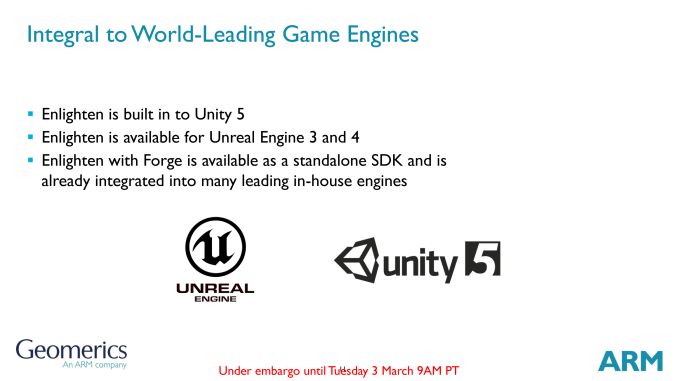 From a feature standpoint Enlighten 3 introduces several new features, including a greatly improved indirect lighting system. Also on the docket is a richer materials system, allowing for improved support for transparent surfaces, which in turn allows for the lighting to be updated to reflect when the transparency of a surface has changed. Alternatively, for scenarios without real-time lighting, the middleware also has increased the quality of lightmaps it can bake.
From a feature standpoint Enlighten 3 introduces several new features, including a greatly improved indirect lighting system. Also on the docket is a richer materials system, allowing for improved support for transparent surfaces, which in turn allows for the lighting to be updated to reflect when the transparency of a surface has changed. Alternatively, for scenarios without real-time lighting, the middleware also has increased the quality of lightmaps it can bake.Ultimately ARM tells us that they believe 2015 will be a big year for Geomerics in the mobile space, saying they expect a number of mobile titles to use the technology. To that end, as part of their GDC launch, ARM and Geomerics are showcasing several Enlighten 3 demos, including an in-house demo they are calling Subway, and a demo showcasing Enlighten 3 running inside Unreal Engine 4.
-
Windows 10 Insiders: New Windows 10 Mobile Build Now Available For Phones
(AnandTech)
It was almost two months ago that Microsoft released the first build of Windows 10 for phones. The first build was very basic, and was missing a lot of the Windows 10 functionality that will be coming. If you did want to try it out though, it was limited to just a handful of devices which means that it had a very small audience. Today that is changing, and the new build is available on almost every single Nokia/Microsoft phone made with the big exception of the high end Lumia 930/Icon, as well as the just released Lumia 640XL. Both devices require some new scaling code added to support the display size and resolution.
But with this build, we really get our first glance at Windows 10 on phones. Many of the core apps have been updated to have a new experience. Project Spartan, which we first saw in the latest Windows 10 desktop build, is now replacing Internet Explorer on the phone as well. Considering the performance delta between mobile CPUs and desktop CPUs, the performance improvements that we have measured in Project Spartan should make an even bigger difference. I will run one of my devices through some benchmarks to see what the new build will offer.
Also new is the Outlook Mail and Outlook Calendar apps, which are universal Windows apps and will be the same ones found on the desktop too, although they are not yet on the current desktop build, so we will get our first look at them on the small screen. They have a new UI, and the calendar and mail can both be accessed while in the same app rather than having to switch between two. Outlook will now leverage Word for email composition as well, which should drastically improve the experience on mobile.
The Phone and Messaging apps are also new. Both have new designs, but the Skype integration coming to the Messaging app does not appear to be part of this build. The People and Maps app are also redesigned.
All of these apps can now be accessed through a new App Switcher, which is accessed the same way as the old one – hold the back button – and it now supports landscape and offers a grid layout on larger devices which have extra screen real estate.
For anyone who wants to try it out, you must be part of the Windows Insider program, and install the Windows Insider app on your phone, and then sign in with the same MS account as you signed up for the Windows Insider with. Remember though that this is all pre-release software, so you may not want to install this on your personal phone. There are a list of known bugs as well, so be sure to check out the source link if you are interested in installing the new Technical Preview.
Source: Microsoft
-
Lexar Launches 'JumpDrive Tough' USB Drives up to 128GB: Focusing on Physical Endurance
(AnandTech)
Over the last week, Lexar has introduced a new series of USB flash drives with enhanced endurance. The new drives are built to survive in tough conditions, such as very cold or very hot temperatures or water. As for performance and capacities, we are talking about fairly mainstream products with USB Type-A interface with low price points.
The Lexar JumpDrive Tough are designed to withstand physical impact (up to 750 PSI or 50 atm), extreme temperatures (from -25°C to +148.9°C) and water (it is claimed to be water resistant up to 98 feet, or 30 meters). This is compared to typical flash drives that can be stored at -20°C and operate at 0°C, or some that are also water resistant from use of resins. There are ranges of products on the market aimed at the physical endurance crowd, and the combination of extended temperature ranges, water resistance, and physical durability is the main selling point of Lexar’s new drives.
Lexar JumpDrive Tough Family of Flash Drives LJDTD32GABNL LJDTD64GABNL LJDTD128GABNL Capacity 32 GB 64 GB 128 GB Type of NAND Unknown Maximum Transfer Rate Read: 130 MB/s
Write: 25 MB/sRead: 150 MB/s
Write: 60 MB/sPhysical Impact 750 PSI Water Resistance Up to 30 Meters Storage Temperature -25°C to +148.9°C
-13°F to 300°FWarranty Three Years MSRP $19.99 $34.99 $59.99 The JumpDrive Tough family of USB drives consists of three models with 32 GB, 64 GB and 128 GB capacities. As for performance, the manufacturer declares up to 150 MB/s read speed as well as up to 60 MB/s write speed (for the 128 GB and 64 GB versions, the 32 GB version is slower). To enable advanced security, Lexar bundles the EncryptStick Lite software with 256-bit AES encryption.
Lexar has already started to ship its JumpDrive Tough family of USB drives at MSRPs of $19.99 (32 GB), $34.99 (64 GB), and $59.99 (128 GB). All the USB sticks are covered with a three-year limited warranty.
Related Reading:
- Kingston Launches DataTraveler Ultimate GT USB Flash Drive with 2 TB Capacity
- Corsair Flash Voyager GS USB 3.0 512GB Flash Drive Capsule Review
- Patriot Supersonic Rage 2 USB 3.0 256GB Flash Drive Capsule Review
- SanDisk Unveils New Generation of USB Type-C Flash Drives
- USB Flash Drives - Power Consumption Measurement using Plugable's USBC-TKEY
- Mushkin Impact 256GB and Atom 128GB USB Flash Drives Capsule Review
-
MAINGEAR Launches R2 Razer Edition: Mini-ITX System with AMD Ryzen or Intel Core i7
(AnandTech)
MAINGEAR this week introduced the first small form-factor Razer Edition desktop aimed at loyal clients of Razer. The new MAINGEAR R2 Razer Edition uses AMD’s and Intel’s latest platforms and comes with a lot of green lights, green coolant, and other green features to reflect the company’s main color.
Razer has made quite a name for itself over the years in the gaming laptop market, but instead of entering the desktop business, the company decided to collaborate with renowned system builders to produce "Razer Edition" PCs. This enables Razer to offer Razer-branded desktops customers without entering a highly competitive market, whereas its partners gain access to Razer’s customer base. So far, Razer has collaborated with Lenovo and MAINGEAR for tower gaming desktops aiming mainstream and no-compromise gamers. With the MAINGEAR R2 Razer Edition, the two companies offer something for those who are looking for a miniature system featuring extreme components with further overclocking potential and liquid cooling.
The MAINGEAR R2 Razer Edition is a Mini-ITX desktop that can fit in a motherboard based on AMD’s B350 or Intel’s Z270 chipset as well as an AMD Ryzen R5/R7 or Intel Core i5/i7 CPU respectively. Keeping the form-factor in mind, the R2 Razer desktop can fit in one graphics card (up to NVIDIA’s Titan Xp), one 3.5” or two 2.5” storage devices, as well as one M.2 PCIe 3.0 x4 NVMe SSD. Unlike many contemporary gaming desktops, the MAINGEAR R2 can accommodate a 5.25” ODD, and when equipped with an appropriate drive, can playback Blu-ray disks.
When it comes to the motherboard choice, MAINGEAR offers ASRock AB350 Gaming-ITX/ac for use with AMD's Ryzen processors or ASUS ROG Strix Z270I Gaming or MSI Z270I Gaming Pro Carbon AC for Intel’s Core i7 CPUs. All of the motherboards feature GbE, 802.11ac Wi-Fi, Bluetooth 4.2, 7.1-channel audio, as well as USB 3.1 connectivity. MAINGEAR’s product brochure for the R2 also mentions ASRock’s X99 Mini-ITX motherboard, but at this point, it is impossible to order such a system, which is not surprising as this is an outgoing platform.
Cooling is crucially important for high performance gaming PCs and MAINGEAR offers many options for the R2 Razer Edition. For entry-level builds, MAINGEAR can install AMD’s or Intel’s retail CPU coolers and keep stock cooling systems on the GPU. For something more advanced, the company offers the closed loop EPIC 240 LCS for the CPU. For high-end configurations MAINGEAR can also build a custom open loop LCS for both the CPU and GPU featuring soft tubing and a 360 mm radiator, whereas for ultra-high-end builds the PC maker can design a custom LCS with crystal or metal hardline tubing, chrome fittings, and other stylish components.
MAINGEAR’s R2 Razer Edition desktops are now available from the company’s web site. Entry-level machines featuring AMD's Ryzen R5 or Intel's Core i5 start at $1099 and $1199, respectively. Meanwhile, SuperStock configurations featuring a customized LCS with hardline tubing and top-of-the-range CPUs and GPUs start at $4299 or $4399 depending on the platform.
Related Reading:
-
HTC Launches Zoe Beta: Hands On and First Impressions
(AnandTech)
Today, HTC is finally launching their Zoe application. Normally, such an announcement is rolled into a smartphone launch, but the launch of this application is one of the first to stand alone. In fact, this is the first application launched by HTC Creative Labs. As a result, the vision and strategy behind this application is dramatically different from HTC's existing hardware and software divisions.
But before we dive into what this means for HTC, it's important to see what this application is. In short, Zoe is the culmination of multiple pieces of HTC Sense, packaged into a single application. It integrates the video highlights feature first introduced in Sense 5, and effectively brings back the HTC Share application which disappeared with the launch of the One (M8). For those that haven't kept up with what these features are, video highlights was an extension of the gallery application in HTC Sense, which allowed for automatic creation of ~30 second highlight reels. These highlight reels were automatically set to music with specific cuts and animations based upon the theme selected. HTC Share was simply a method to present highlight reels and all of the photos/Zoes used in a highlight reel over social media. Both of these were well-received when they first launched, and even now they're good features to have.
There's definitely more to Zoe though, as HTC has integrated a social network aspect with the ability to collaborate and remix other people's videos. While viewing highlight reels from friends using the Zoe network is expected, HTC has also integrated a discovery feature to see highlight reels from other people. In summary, the Zoe application brings HTC's video highlights feature and HTC Share to smartphones running Android 4.4 and adds a social network aspect on top.
In practice, it works just as expected in theory. HTC has done a surprisingly good job of bringing the Sense 6 UX to devices like the Galaxy S5, although some aspects like the status bar don't carry over perfectly. HTC has done a good job of providing a small taste of the well-designed HTC Sense 6 UI without removing major selling points from HTC devices. HTC emphasized that the major goal for this application was to become widely adopted, as while these features were good selling points for HTC hardware there was no real way to add a social network on top without making these features available to non-HTC devices.
In discussions with HTC, it seems clear that they are prioritizing user experience first over a monetization strategy. This is made clearer by the fact that there aren't any in-app purchases at this point in time. Of course, there are plenty of possibilities in this area once Zoe becomes widely adopted. Premium themes and music, along with in-app advertising were all mentioned as ways that HTC could bring in revenue. While HTC wasn't clear on how this would drive hardware sales, it wouldn't be surprising to see features exclusive to HTC devices in the future. It's surprising how far HTC has come in their software design, and I wouldn't be surprised to see this take off. Even if people aren't interested in the social networking aspect, the ability to create highlight videos and share them on pre-existing social networks is quite compelling. The social features also have great potential in situations where multiple people attend an event and take photos and videos on multiple devices. However, it's not quite clear whether this will gain the popularity of applications like Instagram and Twitter, and even if that happens it's currently hard to see the benefits to HTC's hardware division.
As of publication, the HTC Zoe Beta is available on the Play Store. HTC has stated that Android 4.4 devices should be compatible with this application although there may be additional restrictions.
-
Huawei Launches Huawei Watch Elegant and Huawei Watch Jewel
(AnandTech)
Huawei has announced two new versions of the Huawei Watch that target users looking for something more flashy than the standard steel model. The new versions of the Huawei watch are called Elegant and Jewel. They share the same specifications as the Huawei Watch, including the 316L steel case, and sapphire cover glass. The changes solely have to do with the appearance. The Huawei Watch Elegant has a gold top ring with a rose gold plated body, while the Huawei Watch Jewel is adorned with 68 Swarovski Zirconia around the watch face. Both watches will come with exclusive watch faces to match their designs.
The Huawei Watch Elegant will be available for $499, while the Huawei Watch Jewel will be $599. Both will be available in the first quarter of the year.
L'actualité de cette partie est agrégé automatiquement à partir d'autres sites.
Contenus ©2006-2024 Benjamin Poulain
Design ©2006-2024 Maxime Vantorre

